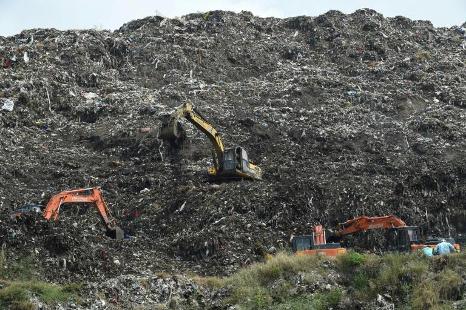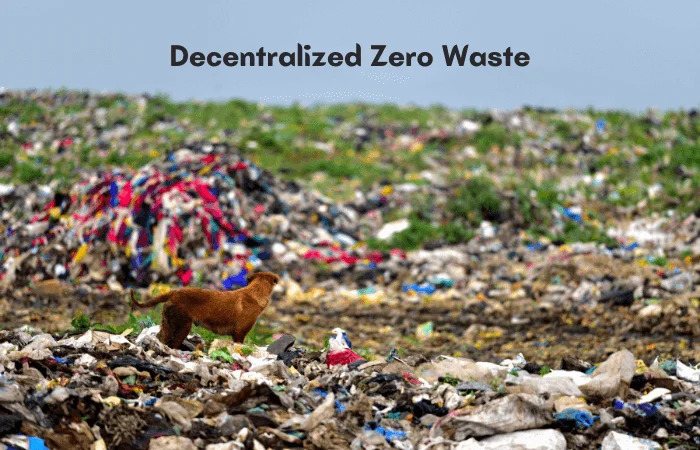Transforming Waste Management for a Greener Future
Introduction: In today's world, where environmental concerns are at the forefront of global discussions, the need for innovative solutions to tackle waste management has never been more pressing. The traditional approach of open dumping not only poses significant health risks but also exacerbates environmental degradation. However, amidst these challenges, initiatives like decentralized zero-waste management offer a beacon of hope for a cleaner, greener future.
Understanding Zero Waste: Zero waste isn't just a buzzword; it's a comprehensive approach aimed at minimizing waste generation and maximizing recycling through decentralized solid waste management systems. At its core, zero waste entails reducing, reusing, and recycling to divert waste from landfills and mitigate environmental impact. This holistic approach emphasizes sustainability, resource conservation, and environmental stewardship.
The Role of Decentralized Waste Management: Decentralized waste management technology plays a pivotal role in realizing the vision of zero waste. By adopting cleaner policies and leveraging advanced technologies, organizations like the DCC Group are leading the charge in revolutionizing waste management practices. Through efficient handling, segregation, and treatment of waste, decentralized systems ensure that valuable resources are recovered and reused, rather than being discarded as landfill waste.
Benefits of Zero Waste Management: The benefits of zero waste management extend far beyond environmental preservation. By embracing zero waste principles, businesses and communities can achieve significant cost savings, enhance resource efficiency, and reduce their carbon footprint. Moreover, by diverting waste from landfills, zero waste initiatives help mitigate the adverse effects of pollution on air, water, and soil quality, thereby safeguarding public health and ecosystem integrity.
Zero Waste Recycling Process: Central to the success of zero waste initiatives is a robust recycling process that aims to extract maximum value from waste materials. Companies like the DCC Group employ state-of-the-art Material Recovery Facilities (MRFs) to sort, separate, and prepare recyclable materials for reuse. Through meticulous sorting of materials like plastics, cardboard, paper, glass, and metal containers, these facilities ensure that valuable resources are recovered and diverted from landfills.
Driving the "Reduce", "Reuse", and "Recycle" Movement: At the heart of the zero waste philosophy lies the mantra of "reduce", "reuse", and "recycle". By encouraging waste reduction at the source, promoting the reuse of products, and facilitating recycling through advanced technologies like MRFs, organizations can effectively tackle the complexities of waste management. Through collective action and collaboration, we can work towards a future where waste is viewed not as a problem but as a valuable resource to be conserved and utilized wisely.
Conclusion: In conclusion, decentralized zero-waste management represents a paradigm shift in our approach to waste management. By prioritizing sustainability, resource efficiency, and environmental stewardship, we can pave the way for a more sustainable future. Through innovative technologies, strategic partnerships, and collective action, we have the opportunity to turn the tide on waste pollution and build a cleaner, greener world for generations to come. Let us embrace the zero waste revolution and chart a course towards a brighter, more sustainable future.
The Role of Bio-Mining and Bioremediation in Land Reclamation
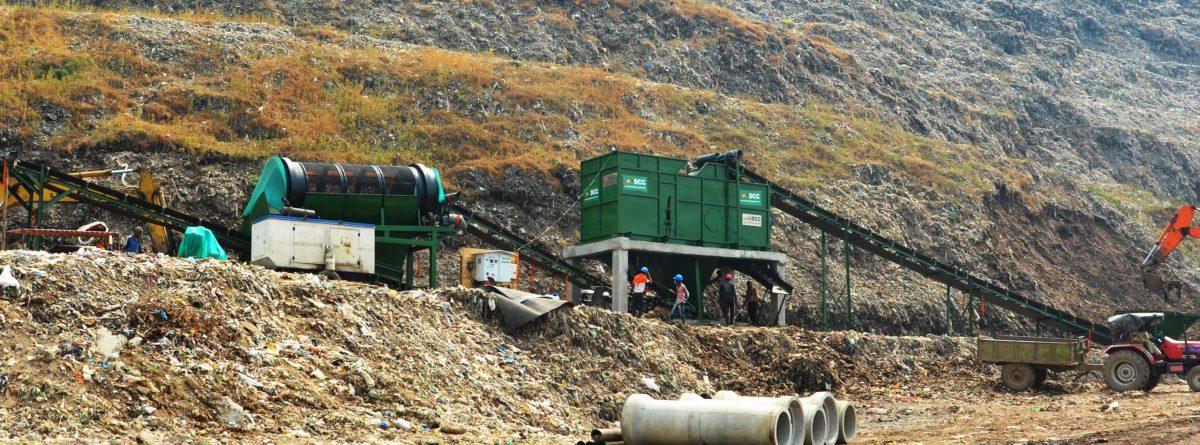
In the bustling streets of India's urban jungles, the sight of overflowing landfills has become an unfortunate norm. As cities grapple with the daunting challenge of legacy waste, the need for sustainable solutions has never been more urgent. Enter bio-mining—a revolutionary process poised to transform waste into wealth and pave the way for a greener future.
Legacy waste, a by-product of inefficient waste management practices, poses significant environmental and health risks. Traditional methods of waste disposal have left landfills bursting at the seams, occupying valuable land and polluting the air, soil, and water. However, amidst this environmental crisis, bio-mining offers a ray of hope.
At its core, bio-mining harnesses the power of biological processes to extract value from waste. Microbial activity, composting, and segregation techniques are employed to recover recyclable materials, organic matter, and inert materials from the waste stream. This innovative approach not only alleviates the strain on landfills but also promotes resource efficiency and circular economy principles.
India's Swachh Bharat Mission, a nationwide campaign for clean India, has placed a spotlight on the importance of waste management and sustainability. Companies like DCC Group have embraced the bio-mining revolution, leading the charge with their cutting-edge technologies and solutions. From legacy waste segregation plants to compost bioremediation systems, these companies are driving tangible change on the ground.
But bio-mining is more than just a process—it's a catalyst for social and economic transformation. By reclaiming lost land and resources, bio-mining opens up new opportunities for growth and development. It creates jobs, stimulates innovation, and fosters community empowerment. Moreover, by reducing pollution and mitigating environmental hazards, bio-mining improves public health and quality of life.
Bioremediation processes play a crucial role in this transformation. Compost bioremediation, in particular, offers a sustainable solution for remediating landfill sites and reclaiming abandoned landfills. By harnessing the natural power of microorganisms to break down contaminants and organic matter, compost bioremediation helps restore soil health and fertility, paving the way for land reclamation and sustainable development.
As India navigates its journey towards a sustainable future, bio-mining stands as a beacon of hope—a symbol of resilience and ingenuity in the face of adversity. It represents a paradigm shift in how we perceive and manage waste, turning what was once a liability into an asset. And as we embrace the bio-mining revolution, we take a crucial step towards building a cleaner, greener, and more prosperous tomorrow for generations to come.
Refuse-derived fuel (RDF) as an Alternative Fuel & Raw Material
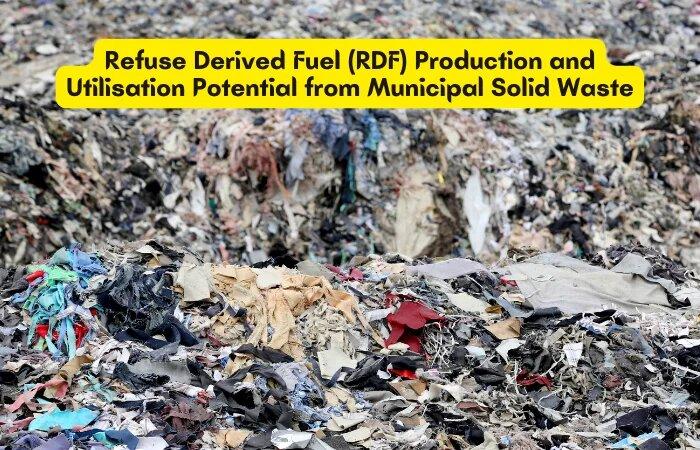
Refuse-derived fuel (RDF) emerges as a transformative resource, bridging the gap between waste management and energy production. Derived from municipal solid waste (MSW) through advanced processing techniques, RDF serves as both an alternative fuel and raw material, driving the transition towards a circular economy. Let's delve into how RDF, including its production process involving an RDF Shredder, is revolutionizing the waste-to-energy landscape and fostering environmental stewardship.
RDF: A Sustainable Alternative Fuel & Raw Material
RDF embodies the concept of waste valorization, extracting value from materials that would otherwise be destined for landfills. Comprising non-recyclable plastics, paper, cardboard, textiles, and more, RDF undergoes shredding and sorting to create a homogeneous fuel source. This versatile material finds application in waste-to-energy plants, cement kilns, and industrial furnaces, displacing traditional fossil fuels and reducing carbon emissions. As an alternative fuel and raw material, RDF promotes resource conservation and minimizes environmental impact, exemplifying the principles of a circular economy.
Advancing Sustainability with RDF Shredders
Central to RDF production is the RDF Shredder – a critical component that facilitates the efficient processing of MSW into uniform fuel pellets. These shredders employ cutting-edge technology to shred and size-reduce waste materials, ensuring optimal combustion properties and energy yield. At DCC Group, we specialize in providing state-of-the-art RDF Shredders tailored to the unique requirements of waste-to-energy facilities. Our shredders maximize throughput, minimize downtime, and enhance the quality of RDF output, empowering industries to embrace sustainable waste management practices.
Transforming Waste into Energy: The Role of Waste-to-Energy PlantsWaste-to-energy plants play a pivotal role in the RDF value chain, serving as hubs for converting MSW into clean, renewable energy. Through combustion or gasification processes, these plants harness the calorific value of RDF to generate electricity, heat, or steam. By integrating RDF into their energy mix, waste-to-energy facilities mitigate dependence on finite fossil fuels, reduce landfilling, and contribute to climate change mitigation efforts. Moreover, the residual ash from RDF combustion can be utilized in construction materials, closing the loop on waste utilization and resource recovery.
Partnering for a Sustainable Future
At DCC Group, we're committed to advancing sustainability through innovative RDF solutions. From RDF production to waste-to-energy plant integration, we provide comprehensive support to industries seeking to embrace cleaner, more efficient energy sources. Our expertise in RDF processing, coupled with cutting-edge RDF Shredder technology, empowers organizations to unlock the full potential of waste-derived fuels while minimizing environmental impact. Together, let's pave the way towards a greener, more sustainable future powered by RDF and renewable energy.
The Versatility of Air Misting Machines: Beyond Pest Control
In today's rapidly evolving world, innovation is the driving force behind progress in every industry, shaping how we approach challenges and solutions. Among the countless advancements, the evolution of air misting machines shines as a prime example of ingenuity and adaptability. From their humble origins as tools for pest control, these air misting machines have grown into essential assets across numerous sectors.
Initially developed to combat agricultural pests, air misting machines quickly surpassed their original purpose. Advancements in technology, coupled with innovations in nozzle design and chemical formulations, propelled these machines into new realms of utility. In construction, they became indispensable for dust suppression, effectively managing airborne particles generated during various activities such as excavation and demolition. Similarly, in mining operations, they played a vital role in environmental management, helping control dust and minimize ecological impact.
However, it was during global crises that the true significance of air misting machines became evident. Throughout the COVID-19 pandemic, these machines emerged as frontline defenders, aiding in the disinfection of public spaces, hospitals, and transportation systems. Their efficient dispersal of sanitizers and disinfectants proved invaluable in containing outbreaks and safeguarding public health.
Furthermore, air misting machines make significant contributions to environmental conservation efforts by mitigating air pollution. By effectively settling fine dust particles, they help improve air quality, enhancing both public health and environmental sustainability.
Looking ahead, the trajectory of air misting machines is marked by continued innovation and customization. Advancements such as IoT integration and remote monitoring capabilities promise to make these machines even more efficient and adaptable to diverse applications. Customization remains paramount, with manufacturers tailoring solutions to meet the specific needs of different industries and environments.
At DCC Group, we take pride in leading this evolution. Committed to delivering solutions of the highest quality, reliability, and sustainability, we strive to empower industries to overcome challenges and embrace a cleaner, safer future. As we continue to push the boundaries of innovation, the evolution of air misting machines promises a brighter tomorrow for us all. We are also proud to be recognized as leading anti-pollution and anti-smog gun manufacturers, providing cutting-edge dust suppression systems and fog cannon machines, serving industries across India and beyond.
Waste Segregation with Trommel Machines: A Closer Look

Waste management, efficiency, and effectiveness are paramount. Enter Trommel machines, the unsung heroes of waste segregation. These cylindrical wonders, with their perforated drums and ingenious design, are transforming the landscape of waste processing. At the forefront of this revolution is DCC Group, a premier manufacturer of screening equipment renowned for its commitment to innovation and quality. DCC Group Trommel machines stand out for their versatility, seamlessly handling both wet and dry waste with ease. Their innovative design, featuring self-cleaning functionality and customizable size options, ensures optimal performance across various waste segregation processes.
Whether it's compost trommel, mini trommel, mobile trommel, or portable trommel DCC Group has you covered. Their range of Trommel machines, including soil trommel and waste trommel variants, caters to diverse needs in waste management. With DCC Group as your Trommel manufacturer, you can count on top-notch quality and reliability. From the convenience of a mobile Trommel screen to the efficiency of a stationary Trommel machine, DCC Group offers solutions tailored to your specific requirements.
However, like any solution, Trommel machines are not without their challenges. Portability remains a key concern for larger units, potentially limiting their accessibility in remote areas. Additionally, the high initial costs associated with acquiring and setting up these machines may pose a barrier for some operations. Yet, despite these drawbacks, the advantages of Trommel machines far outweigh the challenges. From their ability to effectively break down compacted materials to their focus on affordability and ease of maintenance, Trommels offers a compelling solution for efficient waste processing.
In our pursuit of a Zero Waste future, the role of Trommel machines cannot be overstated. By streamlining waste segregation processes and facilitating the recycling and reuse of materials, they are instrumental in driving sustainability efforts forward. As we continue to innovate and refine waste management practices, Trommel machines stand as a testament to the power of technology in addressing environmental challenges. With DCC Group leading the charge, the future of waste management looks brighter than ever before.
Transforming Waste into Wealth: The Power of composter
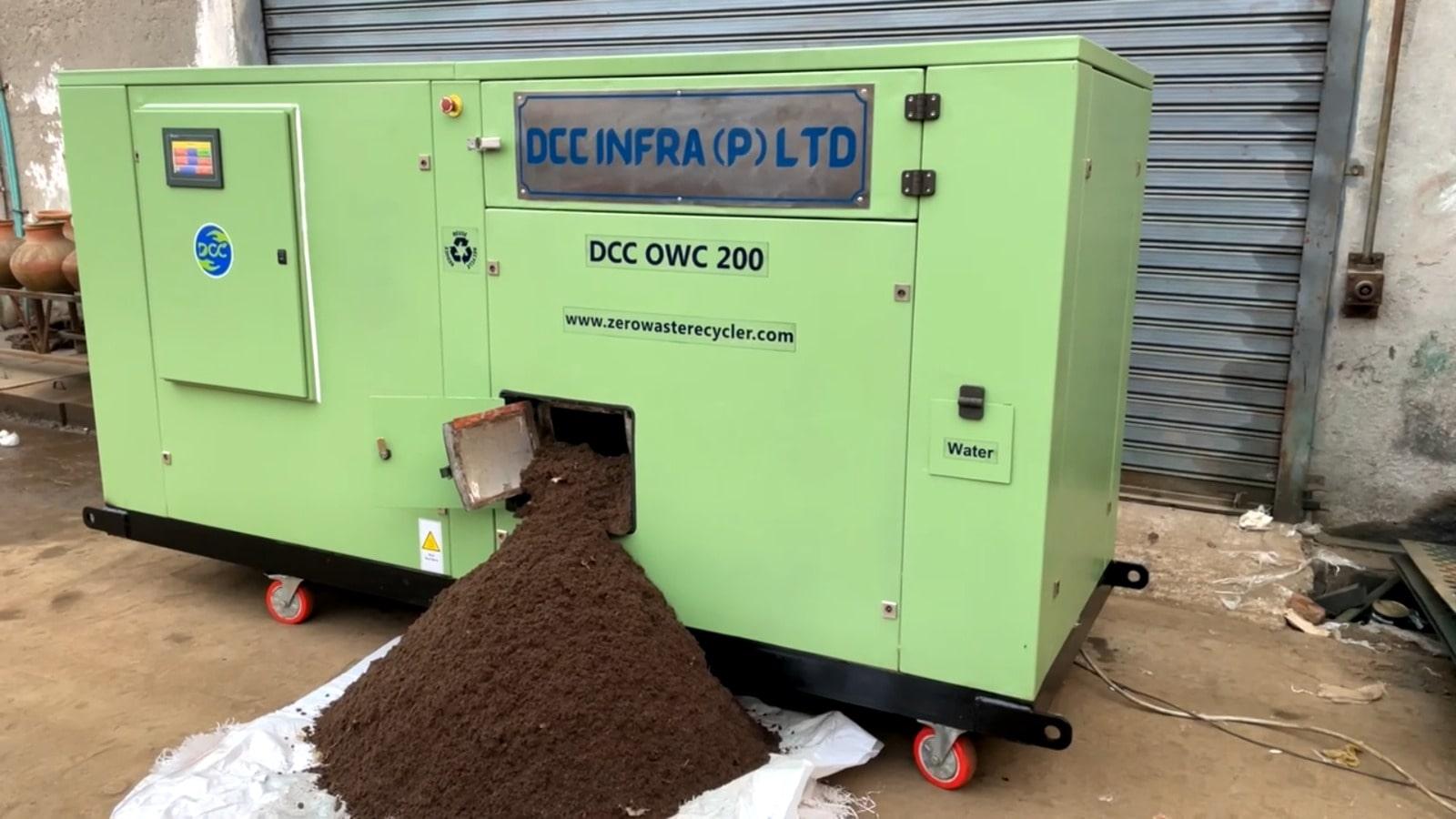
Every day, tons of waste pile up from homes and industries, causing big problems. When food waste ends up in landfills, it releases a harmful gas called methane, which hurts our planet. But there's a solution: composting. Instead of tossing organic waste into landfills, composting turns it into useful fertilizer. Technology has made this process faster, and businesses are using machines to handle waste better. Before jumping into using composting machines, it's essential to understand the basics. This knowledge helps make composting effective and ensures we get the most out of it for our environment and wallets.
What is composting?
Composting is like nature's recycling system. It's a natural process where tiny organisms found in the soil break down things like food/ kitchen scraps and yard waste into a dark, crumbly material called compost. This compost is full of nutrients that help plants grow, and it's free of any harmful germs.
Composting machines are like superheroes in the world of waste management. They speed up the composting process by creating the perfect conditions for those little organisms to do their job efficiently. These machines control factors like temperature, airflow, and moisture levels to ensure that everything breaks down quickly and turns into nutrient-rich fertilizer. So instead of letting our organic waste sit in landfills, composting machines help turn it into something useful for gardens and farms.
How does it work?
Regardless of whether composting occurs naturally or with the aid of a machine, the process follows a few key stages. Initially, the waste is shredded to reduce its volume and make it easier to decompose. This shredding is typically done with an automatic shredder.
In the first stage, mesophilic bacteria begin breaking down the biodegradable waste. These bacteria thrive at moderate temperatures, usually between 20 to 45 degrees Celsius. As they decompose the waste, they generate heat, which raises the temperature of the compost pile. This increase in temperature, often reaching over 40 degrees Celsius, sets the stage for the next phase.
During the second stage, thermophilic bacteria take over. These bacteria thrive in the high temperatures created during the first stage. They further break down the waste, a process that can take several months depending on factors like waste volume and composition. However, it's important to monitor the temperature closely, as excessively high temperatures can harm these bacteria.
Maintaining the right balance of nitrogen and carbon is crucial for successful composting. Too much nitrogen can result in unpleasant odors, while an excess of carbon can slow down the composting process. Finding this balance is essential for producing high-quality compost efficiently.
Can composting be done within a day?
While traditional composting methods often require months to complete, automated organic waste compost (OWC) machines have transformed this timeline, achieving comparable results in just a single day. Some of these machines even surpass basic compost production, generating directly usable manure, representing a significant advancement in efficiency.
Many of these innovative machines come equipped with built-in shredders, which expedite the waste reduction process, saving both time and resources. Moreover, a majority of them boast PLC (Programmable Logic Controller) control systems, providing superior precision and control over composting conditions, thereby ensuring optimal results.
However, the true pinnacle of innovation lies in advanced organic composting machines outfitted with fluid-based dehydration heaters. This groundbreaking technology significantly increases output by over tenfold while simultaneously reducing maintenance costs. By leveraging dehydration, these systems optimize the composting process, maximizing efficiency and marking a noteworthy advancement in sustainable waste management technology.
Furthermore, incorporating bioculture spray or powder facility for composting can further enhance the efficiency of organic waste composting machines. This ensures the production of top-quality compost while advocating for environmentally friendly practices, making these machines even more appealing for businesses and organizations committed to reducing their ecological footprint.
Why should you use an organic waste composting machine?
There are several environmental as well as economic benefits of using a machine to compost organically some of which are as follows:
-
Composting through a machine makes composting easier and hassle-free.
-
The composting machine accelerates the composting process.
-
Composting helps soil maintain fertility and accelerates plant growth.
-
With the help of compost, soil can retain more water
-
Composting reduces the methane emissions in the air due to food dumped in landfills. Composting is a way to keep greenhouse gases in check.
-
Composting prevents soil erosion
-
Composting serves as a natural fertilizer avoiding the need for any chemical substances for inducing plant growth.
-
Composting can help you manage waste efficiently and reduce transportation costs.
-
Compost can be sold to a local farmer which can be cheaper and better than chemical fertilizer.
-
Composting through the composting machine will help reduce rodents and insects
Who Can Benefit from Organic Waste Composting Machines?
The rise in popularity of composting machines over traditional home composting methods is evident, particularly due to their convenience and efficiency. Organic waste converter machines find great utility in various settings, including:
-
Hotels, Restaurants, Canteens
-
Stadiums, Parks
-
Hospitals
-
Schools, Colleges and Universities
-
Airports, Railways
-
Vegetable markets and Supermarkets
-
Corporates and multinationals
Daya Charan and Company organic waste composting machine manufacturers.
A waste composter simplifies the entire waste management process, handling everything from size reduction to waste digestion. With an automatic composter from Daya Charan & Company in Delhi, managing food and kitchen waste becomes a breeze.
Our organic waste composting machine operates independently, making the composting process more efficient and producing high-quality compost. It efficiently processes waste input and generates nutrient-rich manure as output.
Composting without such a machine can be time-consuming, especially for companies dealing with large volumes of waste. Installing our compost machine becomes crucial to prevent waste accumulation.
Our machines create an optimal environment, speeding up the composting timeline significantly. By controlling factors like temperature, aeration, and moisture, they foster ideal conditions for rapid decomposition. This accelerates the conversion of waste into valuable manure, effectively managing waste accumulation.
What Not to Compost?
It's important to keep non-biodegradable items like plastics, metals, and wood out of composting machines to avoid damage. By being careful about what we put in, we can turn organic waste into natural fertilizer. If you haven't already, consider getting a composting machine. It's a great way to be eco-friendly and make good use of waste.
C&D Waste Management in India: A Professional Insight
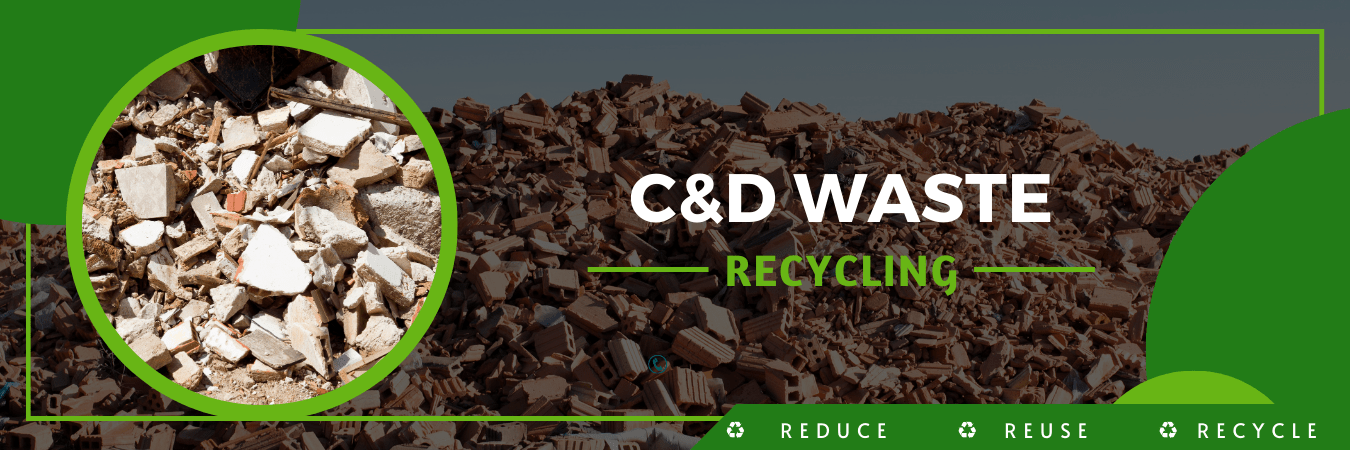
In India's construction world, something big is changing quietly. It's not just about building huge towers or massive roads anymore. It's also about changing how we think about waste. Construction and Demolition (C&D) waste, which people used to ignore or see as a problem, is now becoming valuable thanks to new recycling ideas all over the country.
Like many other places, India struggles to deal with all the waste from construction and demolition. As cities grow fast and more buildings go up, there's been a huge increase in how much C&D waste we make.
Understanding C&D Waste:
C&D waste is generated from the construction, renovation, repair, and demolition of houses, large building structures, roads, bridges, piers, dams, and other infrastructures. C&D waste is made up of wood, steel, concrete, gypsum, masonry, plaster, metal, and asphalt. C&D waste is notable because it can contain hazardous materials such as asbestos and lead. According to the Ministry of Environment, Forest, and Climate Change, India generates approximately 150 million tons of C&D waste annually. This accounts for about 40% of the total solid waste generated in the country. Shockingly, only a fraction of this waste is recycled or managed effectively.
The Need for Recycling:
The rapid pace of urbanization and infrastructure development in India has exacerbated the C&D waste crisis. Inefficient management of this waste stream poses environmental, social, and economic challenges, including pollution, depletion of natural resources, and loss of livelihoods for informal waste pickers. In this section, we will explore the significance of C&D waste management in the Indian context.
Firstly, effective C&D waste management promotes sustainable development. As the construction industry continues to grow rapidly, the amount of waste generated also increases. By implementing efficient waste management practices, we can minimize the environmental impact, conserve natural resources, and reduce greenhouse gas emissions.
Secondly, C&D waste management contributes to the circular economy. By adopting strategies such as reducing, reusing, and recycling construction materials, we can close the material loop and minimize the need for new resources. This not only saves costs but also reduces our dependency on finite resources, creating a more sustainable and resilient construction industry.
Lastly, proper C&D waste management enhances public health and safety. Disposal of construction waste in unauthorized areas or landfills takes up valuable land and leads to environmental pollution, soil degradation, and health hazards. The toxic substances in the waste can leach into the surrounding soil and contaminate water bodies, posing a serious threat to human and environmental health. By establishing proper waste processing facility/plant and following regulated waste disposal methods, we can protect both human health and the environment.
Rise of C&D Waste Recycling:
Fortunately, awareness about sustainable waste management practices and the potential of recycling C&D waste is gaining traction. Several government initiatives, coupled with private sector participation, are driving the growth of the C&D waste recycling industry in India.
1. Government Policies and Regulations: The Government of India has introduced various policies and regulations to promote C&D waste recycling. The Construction and Demolition Waste Management Rules, 2016, mandate the segregation, processing, and recycling of C&D waste generated in construction activities. Additionally, initiatives like the Swachh Bharat Mission and Smart Cities Mission emphasize sustainable waste management practices, including C&D waste recycling, in urban areas.
2. Establishment of Recycling Facilities: In recent years, several recycling facilities specializing in C&D waste have been established nationwide. These facilities employ advanced technologies such as crushing, screening, and sorting to segregate and process different waste materials. The recovered aggregates and materials produced are then utilized in new construction projects, reducing the demand for virgin resources and minimizing environmental impact.
3. Public-Private Partnerships (PPPs): Public-private partnerships play a crucial role in scaling up C&D waste recycling efforts. Collaborations between government bodies, private companies, NGOs, and research institutions facilitate the investment, innovation, and knowledge exchange necessary for the sustainable development of the recycling sector. PPP models ensure the effective utilization of resources and expertise, leading to the establishment of efficient recycling infrastructure and practices.
4. Awareness and Capacity Building: Educating stakeholders about the benefits of C&D waste recycling is essential for fostering a culture of sustainability within the construction industry. Awareness campaigns, training programs, and workshops conducted by government agencies, NGOs, and industry associations help sensitize architects, engineers, contractors, and workers about the importance of waste segregation, recycling, and responsible waste management practices.
Benefits of C&D Waste Recycling:
The widespread adoption of C&D waste recycling in India offers a multitude of benefits, including:
Conservation of Resources: Recycling C&D waste conserves valuable natural resources like aggregates, sand, and water, reducing the environmental impact of construction activities.
Reduction of Pollution: By diverting waste from landfills and illegal dumping sites, recycling mitigates pollution of air, soil, and water, contributing to a cleaner and healthier environment.
Job Creation: The establishment of recycling plants/ facilities and associated supply chains creates employment opportunities, especially for informal waste pickers and marginalized communities, thereby fostering inclusive economic growth.
Cost Savings: Utilizing recycled materials in construction projects can lead to significant cost savings for builders and developers while maintaining quality and durability standards.
How Can We Increase the Amount of C&D Which is Being Recycled?
There are several effective strategies to increase the recycling of C&D (Construction and Demolition) material. Firstly, it's crucial to maintain good organization. Effective communication with C&D recycling companies ensures the availability of suitable containers on-site, ready to receive properly separated materials right from the start of the project.
Recycling materials is not very complicated, but it requires diligence in keeping recyclable materials separate. This creates optimal conditions for recycling to occur smoothly.
Implementing conscientious building design practices can have a significant impact. Designing buildings that are easily disassembled promotes more efficient reuse or recycling of materials at the end of the building's life. This approach also allows for easier adaptation of buildings for new purposes.
Lastly, it's essential to collaborate with a reliable recycling company. Even if following their instructions diligently, ensuring proper recycling depends on the company operating within the regulations set by the government. Therefore, it's important to verify their compliance with state or municipal regulations to guarantee the correct and ethical disposal of materials.
Future Outlook:
As India marches towards its sustainable development goals, the role of C&D waste recycling in the construction sector will become increasingly pivotal. Continued government support, coupled with technological innovation and stakeholder collaboration, will drive the expansion and diversification of the recycling industry. Embracing a circular economy approach, where waste is treated as a resource, holds the key to unlocking the full potential of C&D waste recycling and fostering a greener, more resilient built environment for future generations.
In conclusion, C&D waste recycling represents a paradigm shift in India's construction industry, offering a pathway towards sustainable growth and environmental stewardship. By harnessing the power of recycling, we can turn what was once considered waste into a valuable asset, paving the way for a more prosperous and eco-friendly future.
The Versatility of Air Misting Machines: Beyond Pest Control
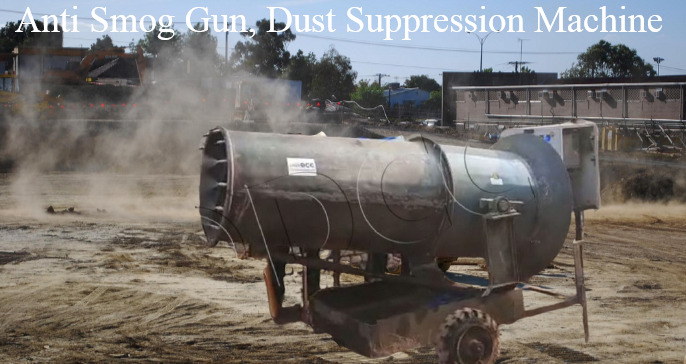
In recent years, air misting machines, or fogging machines, have gained widespread recognition for their effectiveness in pest control. However, their utility extends far beyond just eliminating pests. These versatile devices have become indispensable in various industries and applications, from combating air pollution to controlling the spread of viruses. In this blog post, we'll explore the multifaceted uses of air-misting machines and their significance in different contexts.
Traditionally, air misting machines have been primarily employed for pest control. By dispersing a fine mist of chemical solutions, these machines effectively eliminate insects and pests, making them invaluable tools for agriculture, public health, and residential pest management.
In industries such as construction, mining, and manufacturing, airborne dust particles pose significant health and environmental hazards. Air misting machines play a crucial role in dust suppression by settling fine dust particles into the ground, thus reducing air pollution and minimizing health risks for workers and nearby communities.
Unpleasant odors can be a nuisance in various settings, including waste management facilities, wastewater treatment plants, and public spaces. Air misting machines can neutralize odors by dispersing odor-neutralizing agents, providing a cost-effective and efficient solution for odor control.With the emergence of infectious diseases and global pandemics, the need for effective virus and microbe control measures has never been more critical. Air misting machines are increasingly used for disinfection and sanitization purposes in hospitals, public transportation, schools, and commercial establishments, helping minimize the spread of pathogens and safeguard public health.
Modern air misting systems are highly customizable, allowing for tailored solutions to meet specific requirements and environmental conditions. Advanced technologies, coupled with innovative design features, enhance the efficiency and effectiveness of air misting machines, making them indispensable assets across diverse industries and applications.
Beyond their immediate benefits, air misting machines contribute to environmental sustainability by reducing harmful chemicals, minimizing water consumption, and improving air quality. By adopting eco-friendly practices and technologies, businesses and communities can mitigate their environmental impact while achieving their operational objectives.
In conclusion, air-misting machines have evolved into versatile tools with a wide range of applications beyond pest control. From dust suppression and odor control to virus disinfection and environmental sustainability, these machines play a crucial role in various industries and settings. As technology continues to advance and awareness of environmental and public health issues grows, the importance of air misting machines is likely to increase, making them indispensable assets for modern society.
NAVIGATING C&D WASTE MANAGEMENT IN INDIA: CHALLENGES, SOLUTIONS, AND A GREENER FUTURE
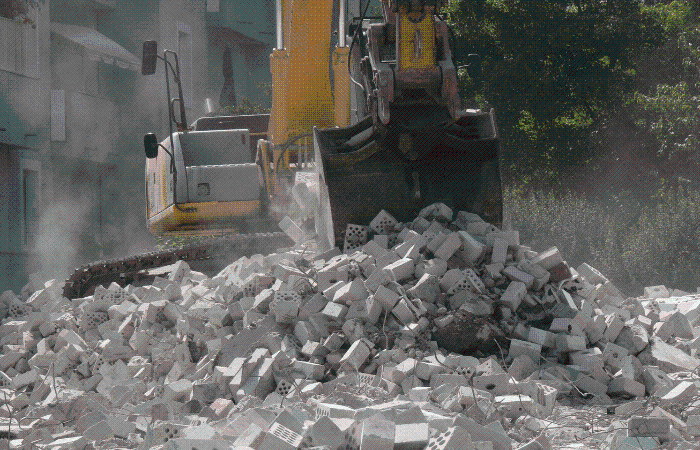
Introduction:
The rapid growth of the construction sector in India has led to an alarming concern for construction and demolition (C&D) waste management. This waste includes materials like concrete debris, stones, red bricks, iron bars, wooden doors, and windows. In response to this issue, the Construction and Demolition Waste Management Rules were introduced in 2016, emphasizing the need to manage concrete waste to minimize environmental impact and promote sustainability in the construction industry.
Importance of C&D Waste Management:
Proper C&D waste management is crucial for reducing environmental impact and creating a greener future. The Construction and Demolition Waste Management Rules serve as guidelines to ensure that waste is handled responsibly. Effective waste management can help conserve resources, reduce landfill usage, and foster a circular economy.
Investing in Recycling Facilities:
Investing in recycling facilities is key to managing C&D waste efficiently. By diverting waste from landfills and promoting recycling, the construction industry can reduce its reliance on raw materials. Recycling not only minimizes environmental impact but also has economic benefits, including cost savings and the creation of new economic opportunities.
Challenges and Solutions:
C&D waste management in India faces challenges such as inadequate infrastructure and limited awareness. However, solutions such as promoting sustainable practices and adopting advanced waste management technologies can overcome these challenges. Stakeholders need to prioritize awareness campaigns, invest in infrastructure, and incentivize sustainable practices to ensure effective waste management.
Disposal of Concrete Waste:
Proper disposal of concrete waste is an essential aspect of C&D waste management. Recycling and reusing concrete waste can divert materials from landfills, reduce the strain on natural resources, and minimize carbon emissions. Adopting concrete waste recycling methods can contribute significantly to a greener construction industry.
Benefits of Recycling:
Recycling C&D waste brings numerous benefits. It conserves resources, reduces the environmental footprint, and decreases carbon emissions. Moreover, recycling construction waste can lead to cost savings and create economic opportunities for the industry and local communities.
Building a Greener Future:
Creating a sustainable construction industry in India requires collective effort. By implementing responsible C&D waste management practices and advocating for sustainable solutions, we can build a greener future. Stay tuned for valuable insights and guidance on navigating the complexities of C&D waste management in India. Together, we can make a positive impact and contribute to a cleaner, greener future.
Conclusion:
C&D waste management is a crucial aspect of the construction industry in India. Proper handling and recycling of C&D waste can significantly reduce environmental impact and create a more sustainable future. By investing in recycling facilities, overcoming challenges, and promoting sustainable practices, we can build a greener construction industry. Join us in the journey towards a cleaner, greener India.
Revolutionizing Waste Management: The Role of Composting Machines in the Daily Battle Against Waste
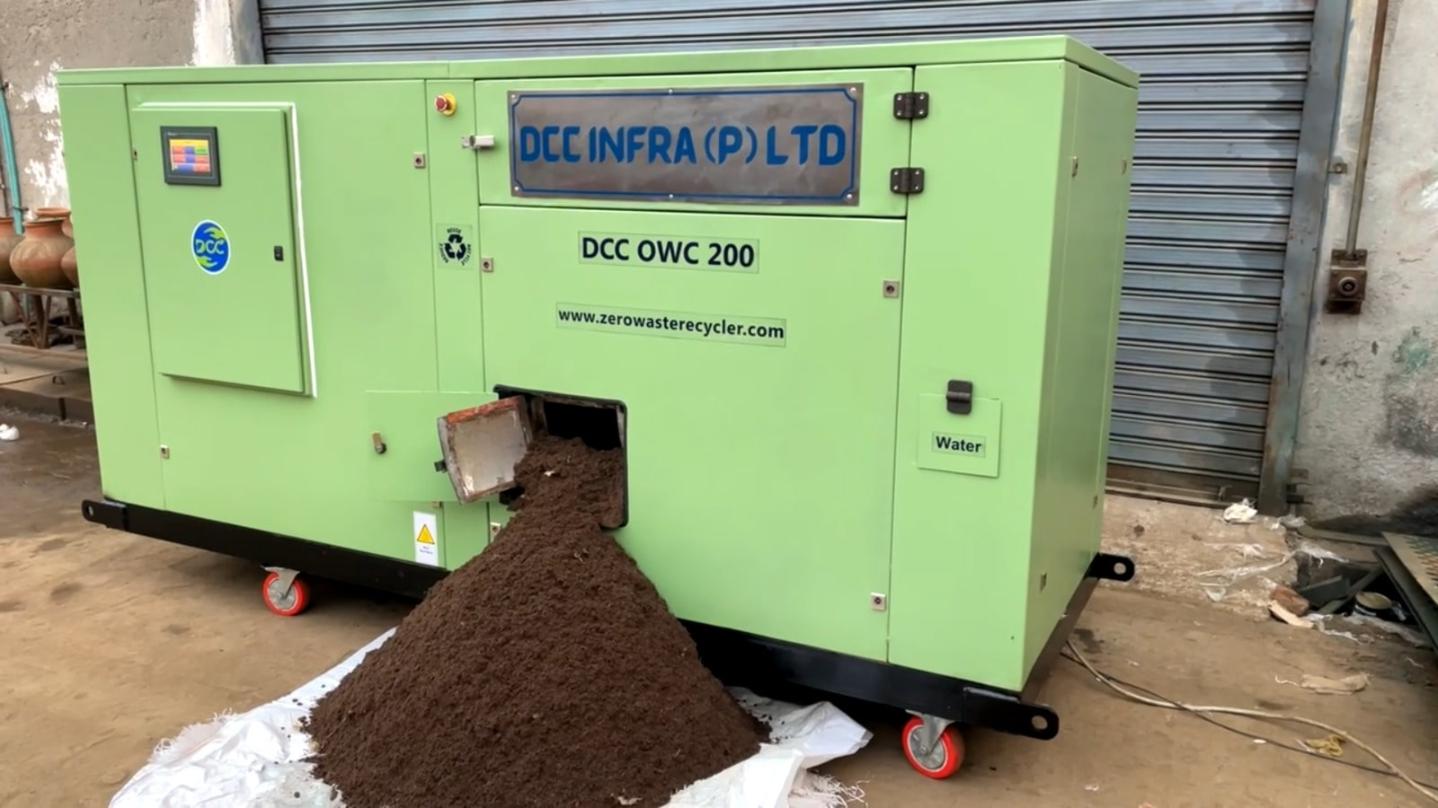
Introduction:
In today’s fast-paced world, our routines are intertwined with an incessant influx of waste, emanating from both households and industries. The environmental repercussions of this waste are profound, particularly with the alarming emission of methane from dumped food in landfills, posing a severe threat to the delicate balance of our planet. As we confront the urgent need for sustainable waste management, composting emerges as a hopeful solution. This natural process adeptly transforms intricate organic materials into nutrient-rich compost, presenting a remedy to the challenges inherent in conventional waste disposal methods.
Composting Unveiled:
Composting, a natural phenomenon, hinges on the pivotal role played by microorganisms in the soil. These microorganisms diligently break down organic materials into simpler forms, culminating in compost—a valuable, pathogen-free resource that enhances soil fertility. While traditional composting methods boast centuries of practice, the contemporary era witnesses technological strides, with composting machines taking center stage in the realm of efficient waste management.
The Role of Composting Machines:
Composting machines are ingeniously crafted to redefine waste management by streamlining and expediting the composting process. These cutting-edge devices establish an environment conducive to waste breakdown, meticulously optimizing factors such as temperature, aeration, and moisture levels. A trailblazer in this field is DCC Group, a distinguished Delhi-based company affiliated with the DCC Group, specializing in the production of innovative organic waste converter machines.
Introducing DCC Group Organic Waste Composting Machine:
At the forefront of waste management innovation, DCC Group, a flagship of the DCC Group, proudly presents its state-of-the-art organic waste composting machine. This revolutionary equipment seamlessly navigates the entire composting process, effortlessly managing sorting, separation, size reduction, and waste digestion with unparalleled efficiency. Operating independently, the company’s composting machine simplifies the management of food and kitchen waste while yielding superior-quality compost as its end product.
Efficiency in Action:
In the absence of composting machines, the composting process can be undeniably time-consuming, particularly for businesses grappling with substantial waste volumes DCC Group organic waste composting machine rises to this challenge by creating an optimal environment for accelerated composting. Regulating critical factors like temperature, aeration, and moisture, these machines significantly hasten the decomposition process, promptly transforming waste into valuable manure.
Conclusion:
Amidst the ceaseless torrent of daily waste, composting machines emerge as champions of sustainable waste management. The DCC Group organic waste composting machine, embodying the innovative prowess of the DCC Group, signifies a resolute commitment to environmental responsibility and efficient waste handling. By embracing these composting solutions—composter, organic waste converter, and organic waste converter machine—we propel ourselves toward a future where we can mitigate waste accumulation, contributing to a healthier planet for generations to come.
Plastic Waste Management: DCC Group's Innovative Solutions for a Sustainable
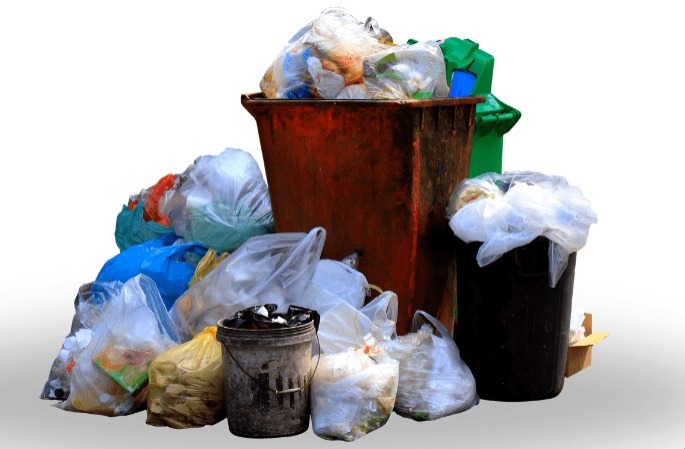
The world is grappling with the rising challenges of plastic waste. Plastic waste management has become a critical issue, especially in developing countries, where a lack of proper infrastructure and high waste generation rates make it a daunting task. The ever-increasing pile of plastic waste has brought the environment to a tipping point. However, DCC Group, with its pioneering plastic waste management solutions, is here to pave the way for a sustainable future.
At DCC Group, we believe in fostering a circular economy where all types of waste are recycled or reused, including plastics. We offer comprehensive plastic waste management solutions that contribute to a more eco-conscious approach to waste management.
Our state-of-the-art MSW plants in India offer systematic solutions, treating various waste categories separately, including paper, plastic, electronics, and glass. We have streamlined the handling of different types of waste simultaneously with our innovative Garbage sorting machine, enhancing efficiency and effectiveness. Recognizing the industry’s trajectory toward digitization, we are spearheading a revolutionary shift by infusing technology into our operations. This technological advancement ensures a more professional and efficient approach to waste management.
As the leading screening equipment manufacturer, we provide numerous methods, services, and waste screening systems to separate materials. We design, manufacture, and supply screening machine and composting machine, aiming for a zero-waste-to-landfill approach. At DCC Group, we are committed to screening and segregating recyclable waste using the 3R of waste management, which is reduce, reuse, and recycle.
Our patented waste sorting machines are dedicated to ensuring that waste is managed sustainably, contributing to a more eco-conscious approach to waste management. We are committed to addressing the various challenges associated with efficiently managing plastic waste processing, using technologies that help us reduce plastic waste and repurpose it to something useful.
Conclusion
DCC Group's commitment to comprehensive waste management solutions, incorporating the principles of the 3R of waste management (reduce, reuse, and recycle), makes us a trusted partner for plastic waste management. With our innovative recyclable machine and expertise in recycling waste management, we provide a safe and reliable alternative for all your plastic waste disposal needs. Join us in our journey towards a cleaner, greener tomorrow, where we efficiently and sustainably manage waste for a more sustainable future.
Revolutionizing Waste Management with DCC Group Trommel Screens
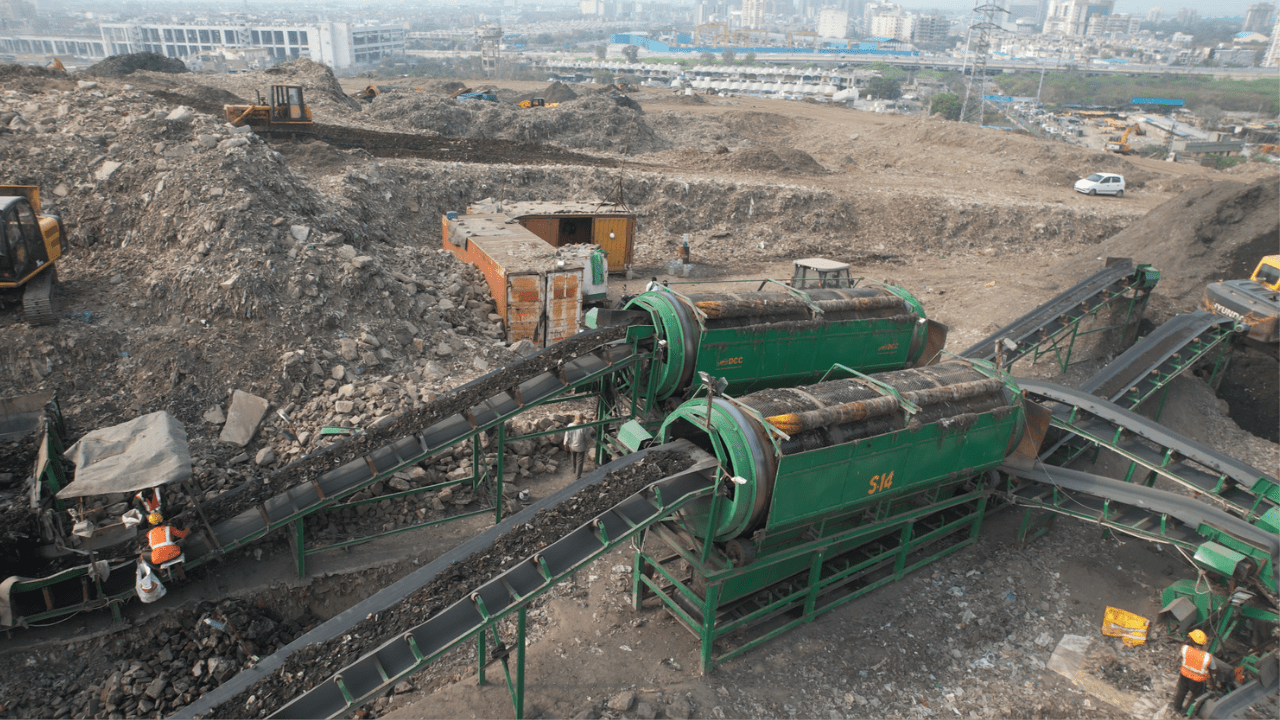
Introduction:
In the dynamic landscape of waste management, innovative equipment plays a crucial role in enhancing efficiency and sustainability. Enter the Mobile Trommel Screen – a cornerstone in waste separation and categorization. Among the myriad of manufacturers in the industry, DCC Group stands tall as the premier provider of Mobile Trommel machines, offering cutting-edge solutions that redefine the way we approach waste management.
Understanding the Mobile Trommel Screen:
At its core, a Mobile Trommel Screen is a cylindrical drum equipped with strategically placed perforations of specified sizes. This cutting-edge mechanical solution is pivotal for waste separation and categorization, finding widespread use in the waste processing industry and Municipal Solid Waste (MSW) plants. As the drum rotates in a circular motion, the Mobile Trommel efficiently separates waste based on size, forming designated piles such as manure or compost. Larger waste that surpasses the hole size is effectively retained at the back of the drum.
DCC Group's Commitment to Excellence in Mobile Trommel Technology:
DCC Group, under the umbrella of DCC Group, leads the charge in manufacturing Mobile Trommel Screens that set new industry standards. Our commitment to innovation, precision engineering, and delivering high-quality screening machines has solidified our position as the leading Mobile Trommel Manufacturers in India.
Key Features of DCC Group's Mobile Trommel Screens:
Diverse Range: Our Mobile Trommel machines boast a diverse range of capacities, spanning from 10TPD to 200TPD, effectively catering to the varying needs of waste processing facilities.
Portability and Flexibility: Specializing in the production of portable and movable Trommel screens equipped with a pre-installed conveyor system, we offer unparalleled flexibility. This feature allows for operation at various locations within a landfill, enhancing efficiency and adapting to the dynamic needs of waste management.
User-Friendly Design: Our Mobile Trommel screens are designed with the user in mind, ensuring ease of operation and requiring minimal manual intervention for smooth and safe performance. Versatility in Waste Handling: Whether dealing with dry or wet waste, our Mobile Trommel screens are up to the task. Their ability to handle a wide range of waste materials makes them an invaluable asset in diverse waste management scenarios.
Contributing to the Zero Waste Mission: In alignment with the global Zero Waste Mission, DCC Group's Mobile Trommel Screens play a pivotal role in waste recycling and reuse initiatives. Proper waste separation is a crucial prerequisite for these initiatives, and our Mobile Trommel machines excel in delivering the efficiency and precision needed to achieve this goal.
Conclusion:
As we navigate the challenges of waste management in the 21st century, DCC Group's Mobile Trommel Screens emerge as beacons of efficiency and innovation. The combination of cutting-edge technology, user-friendly design, and a commitment to sustainability positions our Mobile Trommel machines as the preferred choice for waste processing facilities aiming to contribute to the global Zero Waste Mission. With DCC Group's Mobile Trommel Screens, the future of waste management looks not only efficient but also environmentally responsible.
Revolutionizing Waste Management: DCC Solutions' Comprehensive Approach
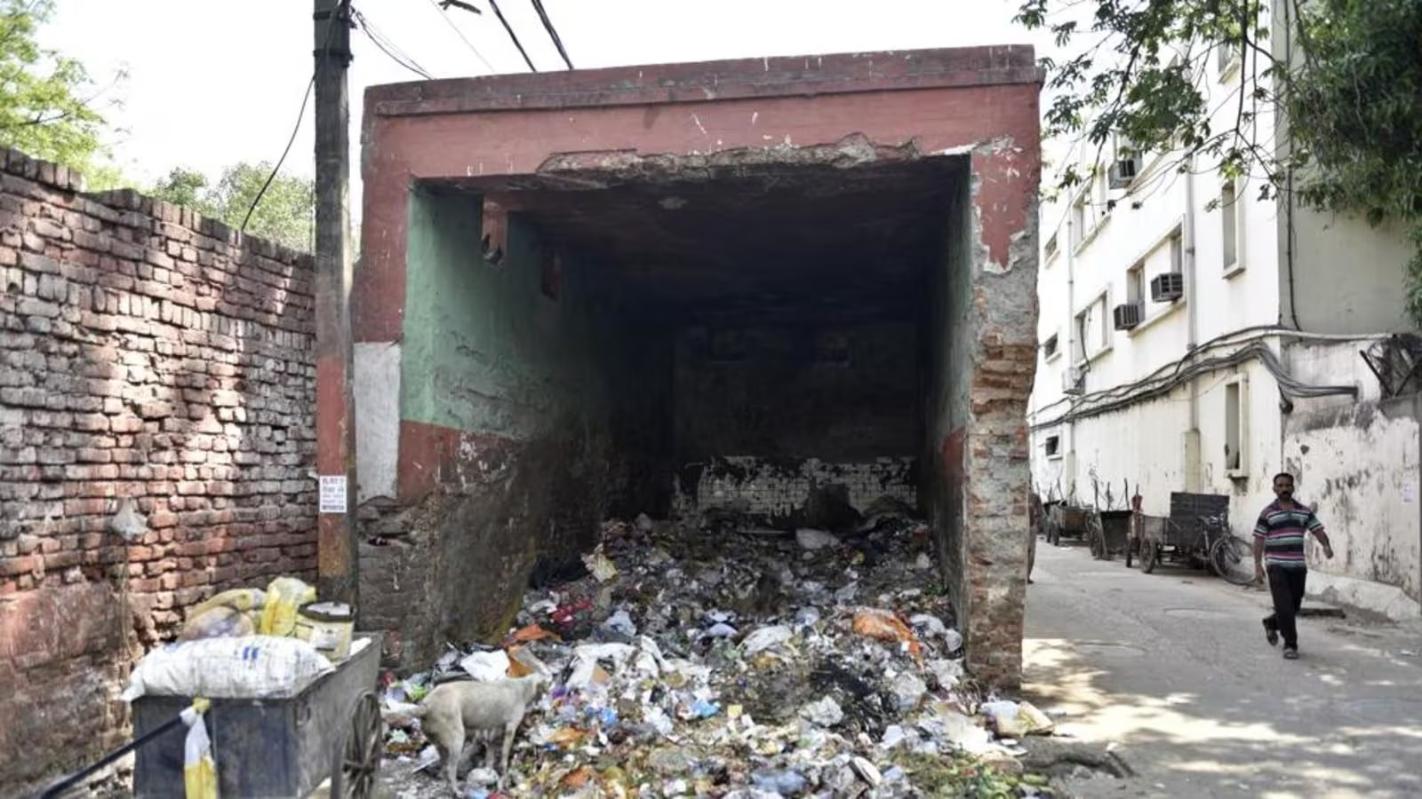
Introduction:
In the face of escalating global concerns about the annual production of 2.01 million tonnes of solid municipal waste, the importance of effective waste management cannot be overstated. DCC Solutions, at the forefront of innovation in waste management, is pioneering cutting-edge techniques that address the challenges associated with handling, processing, and efficiently disposing of tons of municipal waste.
State-of-the-Art MSW Plants:
DCC Solutions operates state-of-the-art MSW plants in India, offering systematic solutions that meticulously treat various waste with automatic waste sorting machine , garbage separation , garbage sorting machine . From paper and plastic to electronics and glass, the company ensures a comprehensive approach to waste management. By treating each waste stream with precision, DCC Solutions minimizes both effort and time in handling municipal waste, contributing to a more efficient and environmentally conscious process.
Embracing Technology in Waste Management:
Recognizing the industry's trajectory toward digitization, DCC Solutions spearheads a revolutionary shift by infusing technology into its operations. This technological advancement ensures a more professional and efficient approach to waste management, reflecting the company's commitment to staying ahead of the curve in the ever-evolving waste management landscape.
Innovative Garbage Sorting Machine:
DCC Solutions boasts an exceptional team of professionals and experts at the forefront of systematically customizing the MSW process. Their innovative garbage sorting machine streamlines the handling of different types of waste simultaneously, enhancing efficiency and effectiveness. This advanced technology not only accelerates the waste sorting process but also ensures a more accurate and precise segregation of materials.
Commitment to a Circular Economy:
DCC Solutions is dedicated to fostering a circular economy where all types of waste are recycled or reused. Leveraging patented waste sorting machines, the company is committed to ensuring that waste is managed sustainably, contributing to a more eco-conscious approach. The approach spans from comprehending the quantity of garbage produced to ensuring the quality of methodologies.
Zero-Waste-to-Landfill Approach:
DCC Solutions addresses the various challenges associated with efficiently managing MSW processing, aiming for a zero-waste-to-landfill approach. The company's commitment lies in offering a one-of-a-kind, comprehensive waste management solution that not only meets regulatory standards but also aligns with environmental sustainability goals.
DCC Solutions - Your Trusted Waste Management Partner:
As a leading screening equipment manufacturer, DCC Solutions provides numerous methods, services, and waste screening systems to separate materials efficiently. From ballistic separation to ballistic separators and Trommel machines, the company's commitment to delivering top-notch products underscores its dedication to revolutionizing waste management.
In conclusion, DCC Solutions emerges as a trailblazer in the waste management sector, combining innovation, technology, and a commitment to sustainability. As your trusted waste management partner, DCC Solutions is shaping a cleaner and greener future through its comprehensive and eco-conscious approach.
Producer Responsibility (EPR) in Waste Management
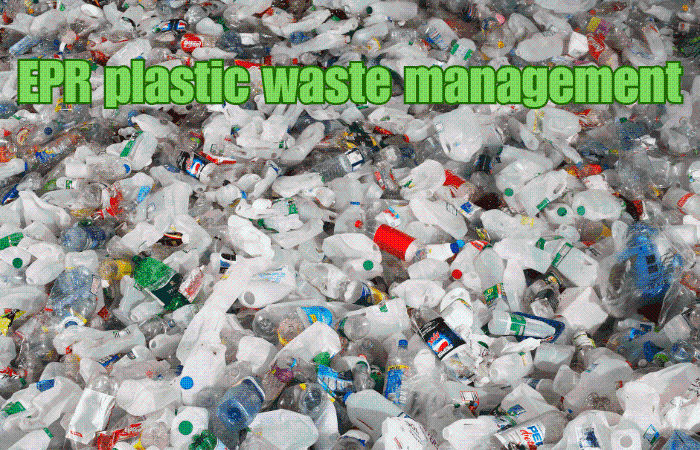
Introduction:Introduction: In an era where environmental consciousness is paramount, Extended Producer Responsibility (EPR) has emerged as a transformative framework, placing the onus on brand owners, importers, manufacturers, and producers to manage the life cycle of their products responsibly. This blog aims to delve into the intricacies of EPR, particularly in the context of plastic waste management, focusing on the significance of adhering to regulations such as the Plastic Waste Management (PWM) Rules of 2016.
Extended Producer Responsibility goes beyond the conventional linear model of production and consumption. It compels businesses to take charge of the treatment and disposal of post-consumer products, necessitating the formulation and implementation of comprehensive EPR Action plans. The objective is clear – to actively engage in managing the end-life of goods and contribute to mitigating the environmental impact on the ecosystem.
EPR Services – A Strategic Approach to Plastic Waste Collection and Disposal: Large-scale production generates alarming volumes of plastic waste, posing severe threats to the environment when improperly disposed of in soil or pollution-inducing garbage dumps. Adherence to EPR rules is not merely a recommendation; it's a mandatory requirement that demands complete cooperation.
Our Plastic EPR Services are designed to assist organizations in fulfilling their obligations under the PWM Rules. We work collaboratively to develop Extended Producer Responsibility plans and establish effective modalities for plastic waste collection. This strategic approach ensures a proactive stance in treating and recycling plastic waste, preventing harm and soil degradation.
The PWM Rules of 2016 – Phasing Out Non-Recyclable Multi-Layered Plastic (MLP): In response to the escalating challenge of plastic waste, the PWM Rules of 2016 were enacted, setting a two-year timeframe for the phasing out of all non-recyclable and multi-layered plastics. This regulatory step aimed to address the alarming volumes of Multi-Layered Plastic (MLP) waste and introduced a ban on non-recyclable or non-energy recoverable MLP with no alternate use.
Obligations of Bulk Producers and Packaging Brand Owners: Bulk producers and packaging brand owners play a pivotal role in the effective implementation of EPR in waste management. They are obligated to meet market targets by responsibly managing both recyclable and non-recyclable Multi-Layered Plastic (MLP) waste. Taking full responsibility for recycling ensures that all generated waste is processed under conditions that pose no harm to the environment.
Conclusion:
Extended Producer Responsibility is a beacon of hope in the quest for sustainable waste management. As businesses actively engage in EPR, embracing their role in managing the life cycle of their products, we move towards a more environmentally conscious future. In the context of plastic waste, adherence to regulations such as the PWM Rules is not just a legal requirement but a crucial step in mitigating the environmental impact of our products. Let us collectively champion EPR, ushering in an era where responsible waste management becomes a shared commitment for the well-being of our planet.
Embracing Refuse-Derived Fuel (RDF) as a Sustainable Alternative Fuel and Raw Material
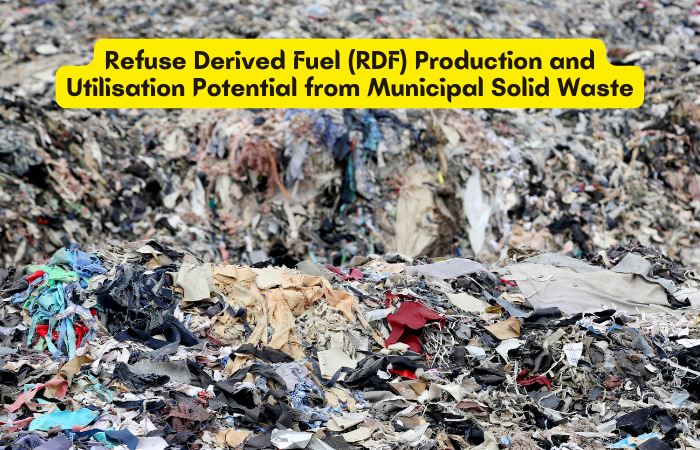
In the quest for sustainable energy sources and responsible waste management, Refuse-Derived Fuel (RDF) emerges as a beacon of innovation and environmental stewardship. RDF is a versatile combustible material derived from a diverse array of waste streams, including Municipal Solid Waste (MSW) and Industrial Waste. This transformative material embodies the concept of turning discarded resources into valuable assets.
Comprising a blend of non-recyclable plastics, paper, cardboard, labels, cotton rags, jute, and assorted corrugated materials, RDF presents a pragmatic solution to the challenges posed by mounting waste. Through processes such as solid waste shredding and RDF production, the combustible constituents within this waste spectrum are extracted and transformed into pellets or derivative materials.
The significance of RDF extends beyond waste reduction; it serves as an eco-friendly alternative to traditional fossil fuels like coal and biomass. Industries, seeking sustainable energy sources, find RDF an enticing substitute, supporting the global shift towards a circular economy. Waste-to-energy plants harness the potential of RDF, converting it into heat and electricity. This transition not only minimizes the reliance on finite resources but also mitigates environmental harm by reducing greenhouse gas emissions.
The integration of RDF into our energy portfolio underscores a paradigm shift in our approach to waste management and energy production. By embracing RDF as an Alternative Fuel & Raw Material (AFR), we harness the dual benefits of waste utilization and sustainable energy generation. The synergy between RDF, waste-to-energy plants, and solid waste shredding technologies highlights our commitment to sustainable practices, showcasing human ingenuity in addressing waste-related challenges.
Conclusion:
The utilization of RDF as an Alternative Fuel & Raw Material (AFR) epitomizes the harmonious convergence of environmental consciousness and technological innovation. This transformative approach stands as a testament to our capacity to repurpose waste into a valuable resource, effectively lessening the strain on landfills and diminishing our carbon footprint. Integrating RDF into waste-to-energy plants, facilitated by solid waste shredding and Municipal Waste Shredding processes, marks a pivotal step toward sustainability. Embracing RDF as a cornerstone of the waste-to-energy landscape isn't merely a decision; it's a purposeful stride towards fostering a greener, more sustainable future for generations to come.
Sustainable Solutions: Managing Construction and Demolition Waste in India

Introduction: Concrete Waste , Infrastructure waste , Building Waste , Disposal of Concrete Waste , Concrete Waste , recycling Reducing , Reusing , and Recycling Concrete Materials
The construction boom in India has brought about unprecedented growth in the infrastructure sector, accompanied by a surge in Construction and Demolition (C&D) waste. The sheer scale of building projects has underscored the importance of effective waste management to address environmental concerns and promote sustainable practices. In 2016, India took a significant step forward by introducing the Construction and Demolition Waste Management Rules, laying down a framework for responsible waste handling. This blog explores the challenges posed by C&D waste in India and highlights the key strategies outlined in the rules to tackle this growing issue.
The Rise of Construction and Demolition Waste:
The exponential growth in construction activities has led to a substantial increase in C&D waste generation across the country. Concrete waste, infrastructure waste, and building waste have become key contributors to this environmental challenge. The improper disposal of concrete waste poses a threat to ecosystems, water bodies, and public health. Recognizing the urgency of the situation, India implemented the Construction and Demolition Waste Management Rules to regulate and manage the impact of this waste.
Key Elements of Construction and Demolition Waste Management Rules:
The 2016 rules aim to revolutionize the construction industry's approach to waste by emphasizing environmentally responsible practices. The guidelines prioritize the reduction, reuse, and recycling of concrete waste and other materials associated with construction and demolition. Several key elements of the rules include:
Disposal of Concrete Waste:
The rules provide specific guidelines for the safe and responsible disposal of concrete waste. It encourages the establishment of designated disposal sites to prevent indiscriminate dumping, mitigating the environmental impact.
Recycling Concrete Materials:
One of the central tenets of the rules is the promotion of recycling concrete materials. Investing in recycling facilities and technologies enables the transformation of waste into reusable resources, reducing the strain on natural resources and curbing environmental degradation.
Reducing, Reusing, and Recycling:
The mantra of "reduce, reuse, and recycle" is integral to the waste management strategy outlined in the rules. Construction projects are encouraged to minimize waste generation, reuse materials wherever possible, and prioritize recycling to extract maximum value from discarded resources.
Fostering Sustainability in the Construction Industry:
To successfully manage C&D waste, it is imperative to foster a sustainable mindset within the construction industry. This involves not only adhering to regulations but also actively promoting eco-friendly practices. Raising awareness among stakeholders about the impact of construction and demolition activities on the environment is crucial. By instilling a sense of responsibility, the industry can contribute to a cleaner and greener future for India.
Conclusion:
The management of Construction and Demolition waste in India is at a critical juncture, with the construction sector witnessing unprecedented growth. The implementation of the Construction and Demolition Waste Management Rules in 2016 marks a significant stride towards addressing the challenges posed by C&D waste. By focusing on responsible disposal, recycling of concrete waste, and promoting the principles of reduce, reuse, and recycle, India's construction industry can pave the way for a sustainable and environmentally conscious future. Embracing these principles will not only mitigate the environmental impact but also contribute to the creation of a more responsible and resilient construction sector in India.
Revolutionizing Waste Management: The Power of Ballistic Separators and Garbage Sorting Machines.
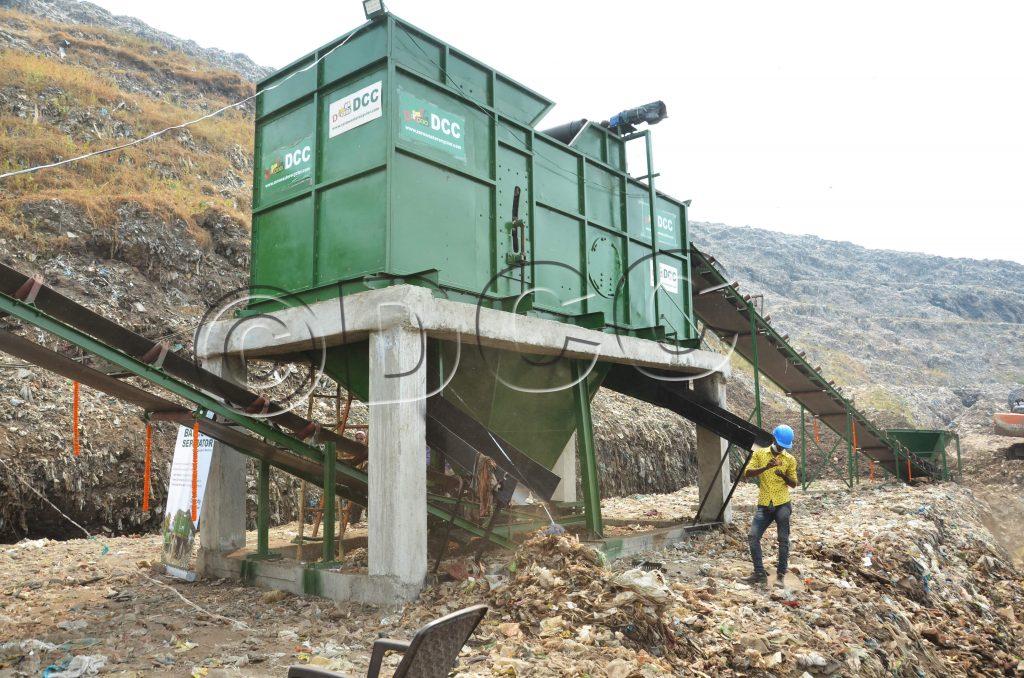
In the realm of waste management, the advent of cutting-edge technology has heralded a significant shift towards more efficient and sustainable practices. Among these innovations, the ballistic separator stands as a game-changer, redefining garbage separation and sorting processes. Paired with state-of-the-art Garbage Sorting Machines, these systems have revolutionized waste management by automating and streamlining the segregation of different materials. The ballistic separator, a cornerstone of this advancement, employs high-speed rotating paddles and precise trajectories to separate materials based on their size and shape. Its precision ensures accurate sorting, making it a vital component in the quest for enhanced waste management solutions.
Garbage Separation, a critical phase in the waste management pipeline, is now streamlined and optimized through these automated systems. This meticulous sorting not only facilitates recycling but also reduces the burden on landfills by diverting reusable materials from the waste stream.
The integration of Garbage Sorting Machines with ballistic separators marks a paradigm shift in waste management strategies. Their combined prowess ensures a more sustainable approach, enabling municipalities, recycling centers, and industries to handle waste more effectively. By leveraging these advanced technologies, communities can significantly reduce environmental impact, conserve resources, and move closer to a circular economy.
As we continue to navigate the challenges posed by escalating waste production, embracing and implementing these innovative solutions becomes imperative. The amalgamation of ballistic separators and Garbage Sorting Machines offers a beacon of hope, promising a future where waste management transcends conventional limitations and paves the way for a greener, more sustainable world.
RDF stands for Refuse Derived Fuel
RDF stands for Refused Derived Fuel is generated from home and business waste and it additionally incorporates biodegradable substances and plastics additionally. Even the gas is comprised of combustible additives which can be known as Municipal Solid Waste (MSW). However, non-flammable substances which include glass and metals are eliminated and after that, the leftover fabric is then shredded. After that, gas is used as a choice to fossil fuels in strength flora in order to produce electricity. Most importantly, it acts as a renewable strength supply that makes certain that the waste isn’t simply thrown right into a landfill web website online and utilized in a great manner.
What Production Steps Are Involved in RDF?
As Refused Derived Fuel production starts with keeping apart non-flammable wastes consisting of steel and glass from combustibles. When the separation is performed all the bigger gadgets are into smaller pieces. Afterward, the subsequent level is the gathering of un-segregated municipal waste, which incorporates natural waste this is broadly speaking meals waste) and diverse different substances like paper, cloth, plastic, and timber that offer the calorific price required to burn. During the separation stages, unsafe substances are eliminated completely. As Refused Derived Fuel can method exceptional substances and there are various strategies that ensure the introduction of a homogenous cloth and it’s also used rather than fossil fuel.
The most common method of extracting RDF from Municipal Solid Waste is to combine mechanical and biological treatment methods. Some of the methods are-
- Size screening
- Coarse shredding
- Bag splitting
- Shredding
- Magnetic separation
- Refining separation
RDF in waste management
In India, there may be a first-rate want for powerful strong waste control due to fast industrialization. The system of co-processing of refused derived fuel (RDF) will become an exceptional choice for surroundings control of non-biodegradable, non-recyclable natural waste as nicely a good way to make a contribution enormously a good way to lessen emissions as fossil fuels utilized in cement kilns. Besides this, the authorities have additionally brought rules for processing additionally. Most importantly, the first-rate RDF leaves its effect on its usage while it worries cement kilns. There are many cement industries in India that can use RDF instead of fossil fuels.
RDF covers a wide range of waste materials that have been processed. Most importantly, the RDF production technology era contributes to a technique of waste to technique and decrease the carbon footprint as its miles important for diverting waste from all of the landfill sites.
Blog Content Source: https://zerowasterecycler.wordpress.com/2022/11/29/rdf-stands-for-refuse-derived-fuel/
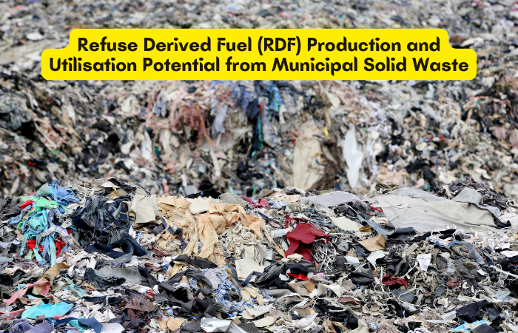
Waste Screening Machines & Equipment
Solid waste can be organized easily and quickly using the ideal machinery or tools. This implies that more valued components can be retrieved, lowering the both financial and ecological costs of waste. Furthermore, enhanced screening may enable the recycling of previously complex composites. Here’s a summary of a number of the most pressing material recovery hurdles, as well as a glance at some latest innovations to address these gaps.
The Challenges: Recycling & Material Recovery
Equipment and materials involved are those aspects where most recycling struggles, especially in terms of municipal solid waste. Manufacturing organic wastes are frequently disposed of in landfills instead of reprocessed. Mining, demolitions, and dismantling can all produce significant quantities of fresh waste, even though real resources can be retrieved with the right approach and using the perfect equipment.
These are among the most obstacles in material recovery and recycling that can substantially lower screening success. To address these concerns, advanced composite processing instruments, as well as advanced screening equipment concentrate on boosting both accuracy and productivity.
Is Screening the Perfect Solution?
Screening is probably the most common technique for sorting waste materials according to their size using one or even more screening surfaces. Screening is used in a various range of legacy waste resources as well as energy recovery processes. Screens can be utilized either before or after shredding and then after end up wasting air separation in a wide range of situations involving both light and heavily loaded fraction components. Recirculating screens and different kinds of vibratory screens are the majority of popularly used screens.
Recycling screening is the method of dividing waste products and sorting them into different levels based on their size. A screening machine typically includes a drive that moves up and down the recyclable waste, a screen cloth for separation, and then a deck that holds the screen cloth is supported.
By incorporating composting screening into your collection and recycling handling line, users can save a significant amount of money that would have been spent on physical labor.
There are different kinds of screening hardware that are discussed below as well:
Trommel Screens, Vibrating Screens, Revolving Screens, Mobile Screens
Original content source: https://zerowasterecycler.wordpress.com/2022/10/11/waste-screening-machines-equipment/
Organic Waste Composting Machine Manufacturer in Delhi
An organic waste composting machine is an independent unit that allows the composting procedure and offers higher composts. It takes waste as it enters and offers manure as its output. This gadget creates a scenario to hasten the composting procedure.
With this kind of a massive size of waste generated each day at the home stage and commercial stage, it turns into crucial to address waste effectively. The meals dumped into landfills launch methane that’s risky for the earth as a whole.
So Composting Machine is a first-class manner to address waste. Composting is a manner of breaking down complicated natural materials into less complicated ones with the assistance of micro-organisms gifted by the soil. The very last pathogen-loose product after a breakdown is known as compost. A composting gadget can without difficulty compost any waste and flip it right into a useable fertilizer.
What is an organic waste composting machine?
A special bacterium that is heat, salt, and acid resistant are used. Once the bacteria are announced in the machine they recreate at a rapid pace under an ideal internal situation. When organic waste is filled in the converter increase in the moisture stage is detected by the sensor which consequently starts the heating system.
Organic Waste Composters (OWC) is designed to make composting easy & convenient. It’s fully automatic & has a very compact & creative design. Turn organic waste into nutrient-rich compost and fertilizer. Our range of OWC systems is perfectly suited for the waste management requirements of, Housing societies, Industrial kitchens, Malls & food courts, Medium and Large Hospitals, Large scale corporate cafeterias, Food processing companies, Slaughterhouses, Municipal wards, markets, parks & gardens.
Blog Content Source: https://zerowasterecycler.wordpress.com/2022/08/04/organic-waste-composting-machine-manufacturer-in-delhi/
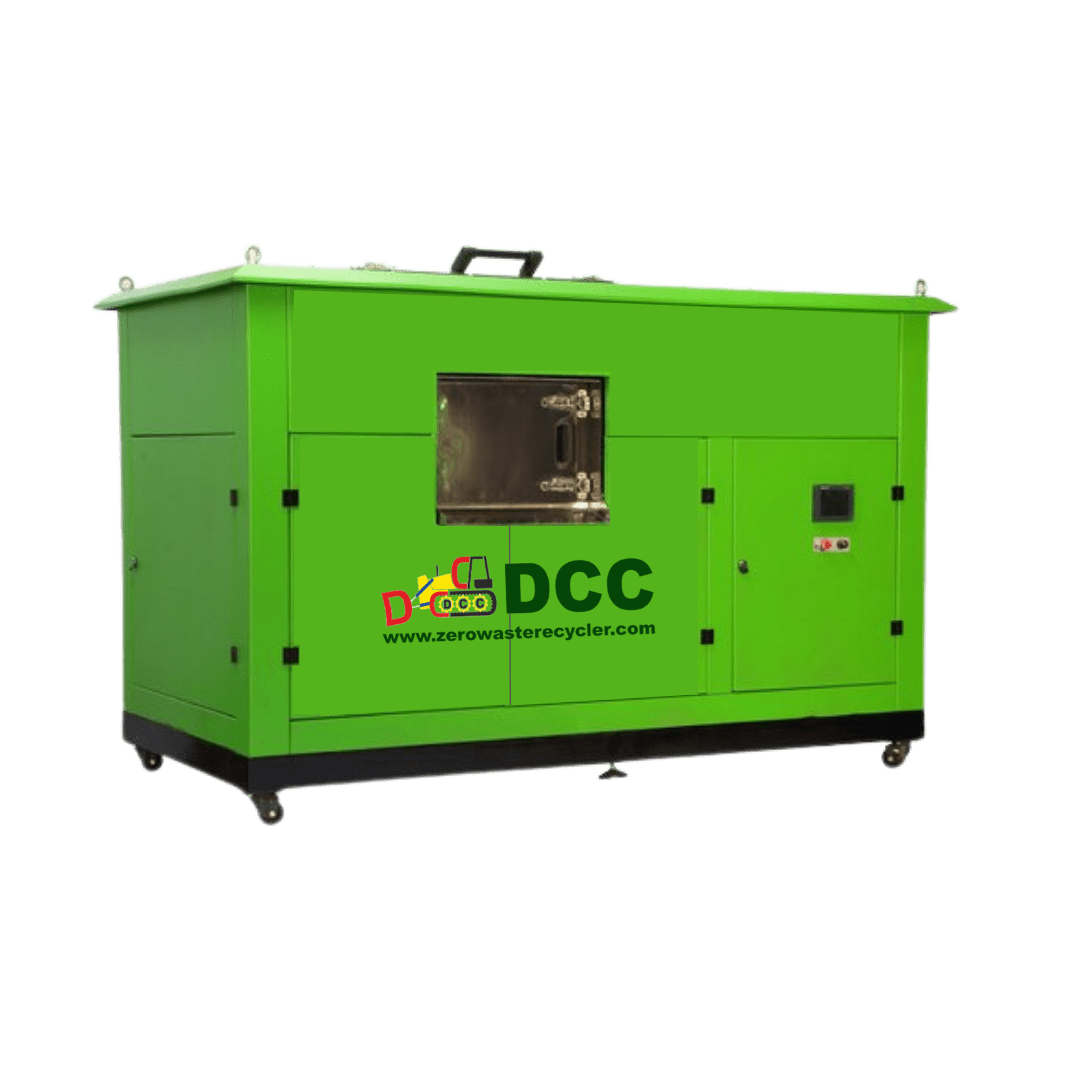
Zero waste conserves resources and minimizes pollution
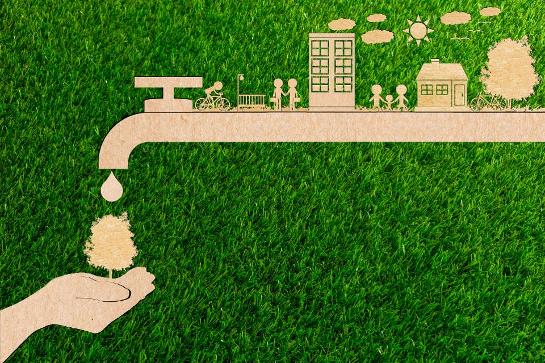
Zero Waste is a whole machine technique to useful resource management targeted on reducing, reusing, and recycling. To make recycling paintings for everyone, we want to buy products made from the materials we recycle. This reduces the need to make use of non-renewable sources through reusing substances that have already been consumed.
Zero waste is a whole system technique that targets to take away as a substitute than ‘manage’ waste. As nicely as encouraging waste diversion from landfill and incineration, it is a guiding layout philosophy for casting off waste at supply and at all factors down the deliver chain. It shifts from the present day one-manner linear useful resource use and disposal subculture to a ‘closed-loop’ circular system modelled on Nature’s successful strategies.
In contrast, a 0 waste technique conserves natural assets and reduces pollutants from extraction, manufacturing and disposal. Reducing and reusing approach fewer products are made, as people buy less and as merchandise are made to last. Recycling continues waste out of landfills and incinerators and provides producers with recycled as opposed to raw materials to make new goods. Recycling or restoration of resources is the procedure of taking useful however discarded items for next use.
Traditionally, these items are processed and cleaned before they’re recycled. The technique goals at reducing strength loss, consumption of new fabric and reduction of landfills. We lessen what we need, reuse as a great deal as we can, send little to be recycled, and compost what we cannot.
Blog Source: https://zerowasterecycler.wordpress.com/2020/02/21/zero-waste-conserves-resources-and-minimizes-pollution/
Contact:
DCC
info@zerowasterecycler.com
Mob No, +917290049003
Some of the best organization that is making recycling easy in India
The quantity of solid waste produced in city depends on the type of the city, its population, living standards of the residents and degree of commercialization and various activities prevailing in the city. The generation of waste mainly depends on the increase in population and the type of activity.
A variety of NGO have been launched in India itself, to help you reuse, reduce and recycle the products you use on an everyday basis. Ahead, we list down some of such startups and services that are trying to take you one step closer to a sustainable future.
- NSWAI
- CWE
- DCC (Daya Charan & Company)
- Chintan
- Wastewarriors
- E-Waste Recyclers
- Saahas Zero Waste
- Paperman Foundation
- Gem Enviro Management
Daya Charan & Company (DCC) is the only leading professional non-profit organization in the field of Solid Waste Management in India.
DCC comprises of a strong 100+ member team of experts working on waste management which includes all kinds of waste such as:
- Municipal solid waste
- Bio – medical waste,
- Hazardous waste
- E-waste and
- Construction & demolition waste
- C&D Waste Recycling
- Legacy Waste Bio-mining
- Fresh Waste Segregation
- Complete O&M of Landfill
Blog Source: https://www.zerowasterecycler.com/some-of-the-best-organization-that-is-making-recycling-easy-in-india/
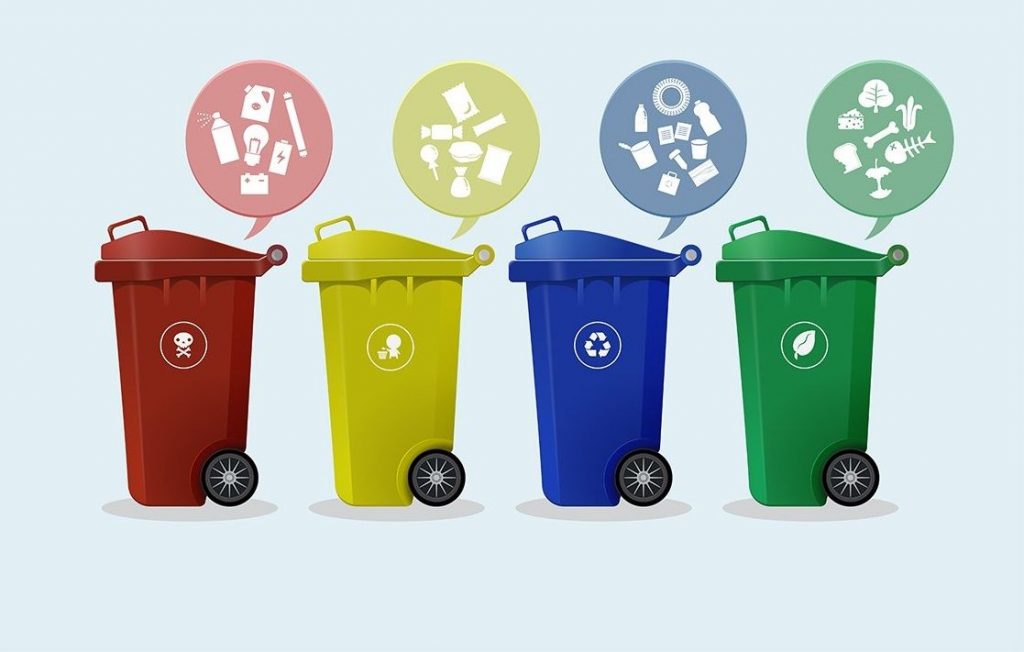
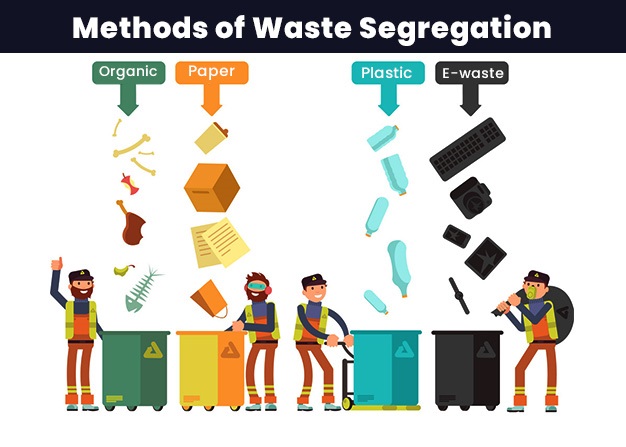
Waste Segregation and Management
Waste segregation is the easy technique of finding out your dry and moist waste and storing them separately. The dry waste is then despatched for recycling, whilst the moist rely is composted properly.
Waste segregation wishes to be executed in each family in order that the quantity of waste dumped in landfills is extensively reduced. This in turn reduces land, water, and air pollution. Segregating waste additionally makes it easier to recycle, compost, or incinerate it, relying on whichever approach is applicable.
Zero Waste is a philosophy of doing away with the technology of substances that haven’t any possible or monetary choice for end-of-use management. Zero Waste is a fixed of standards targeted on waste prevention that encourages the remodel of aid lifestyle cycles so that each one merchandise is reused. Its end purpose is to lessen waste from landfills and eventually, save you land, water, and air pollution.
Most of the workplaces observe a two-bin system—one for recyclable waste and one for moist garbage. But much like your home, the greater you segregate, the higher the waste management.
“Before an organization for waste segregation, a conduct alternate is crucial for its powerful operation. It’s the duty of the authorities and those who are privy to segregation to teach others.
Benefits of Zero Waste management:
Zero waste reduces our weather impact.
Zero waste conserves useful resources and minimizes pollution.
Zero waste promotes social fairness and builds community.
Zero waste helps a neighborhood around the financial system and creates jobs.
Zero waste desires groups to play a key role.
Zero Waste is a fixed of ideas cantered on waste prevention that encourages the remodel of useful resource lifestyles cycles so that each one merchandise is reused.
DCC – Manufacturing Waste Segregation Machine, MSW Plant, Bio-mining Project in India. I have taken the initiative to help household recycle their waste and take ‘Swachh Bharat Abhiyan’ to next level.
Blog Source: https://zerowasterecycler.wordpress.com/2020/09/15/waste-segregation-and-management/
Zero Waste Management Movement
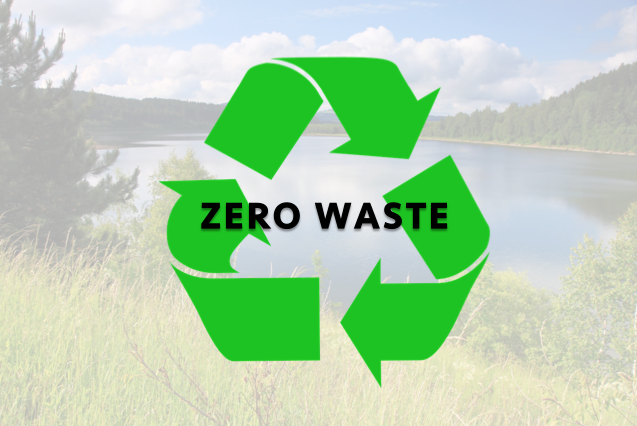
The zero-waste Movement is a life-style wherein humans purpose to get rid of their trash output completely. This method no plastic, no wrappers, no garbage. The Zero Waste Movement is nowadays launching the complete utility for the Our Zero Waste World Summit, a 5-day celebration of zero waste humans, projects, and designs from everywhere in the world.
"This is ready greater than recapturing sources in around economy, it’s a gateway to a brand new manner of considering sources, relationships, community, connectedness, and nature. We recognize that that is urgently essential given the ecological disaster we're facing. Zero waste gives real-world, realistic strategies for starting to cope with those large issues.
”In order of maximum to least importance, the 5 concepts of zero waste that come proper from the professionals are: Refuse, Reduce, Reuse, Compost, and Recycle.
Refuse: keep away from shopping for merchandise with plenty of packaging.
Reduce: don’t purchase matters that aren’t in reality essential.
Reuse: repurpose tired items, save for used items, and buy reusable merchandise like metal water bottles.
Compost: permit natural waste that not often decomposes in landfills to simply develop into compost thru modern strategies of maintaining it.
Recycle: use the electricity and sources that recycling produces in preference to the use of the landfill route.
To address the concept of residing sincerely Zero waste, “Zero-wasters” reduce out disposable packaging and decide to handiest the use of reusable merchandise. To embark on this journey, many Zero waste way of life fans begin with minuscule life changes.
Eventually, they building up to the form of way of life that in the long run produces the quantity of the trash that may be captured in an 8-ounce mason jar via way of means of the cease of the year.
Zero-wasters use reusable containers, compost meals scraps, and percentage second-hand garments and different necessities. They lessen trash via way of means of buying Zero waste pleasant meals or traveling specialized supermarkets that resource humans of their assignment to stay this way of life. Many select to donate antique garments in preference to throwing them away.
Although it's really difficult to be absolutely Zero waste, specifically in India, it is a superb venture to take on. Even incorporating some of the lifestyle habits of zero-wasters can contribute to a healthier planet.
DCC — Manufacturing Waste Segregation Machine, MSW Plant, Bio-mining Project in India. I have taken the initiative to help household recycle their waste and take ‘Swachh Bharat Abhiyan’ to next level.
Blog Source: https://zerowasterecycler.wordpress.com/2020/10/19/zero-waste-management-movement/
Waste processing plants - Ballistic separator
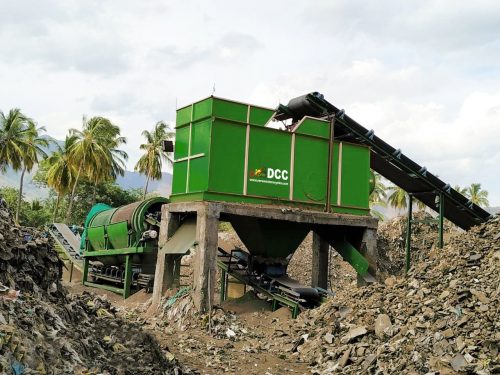
The ballistic separator is appropriate to type the non-stop circulate of waste in unique fractions relying on form and weight. A collection of parallel paddles applies a sturdy shaking to the entire waste for powerful separation, conveying the diverse sort of substances in unique directions. They have the characteristic of isolating the feed circulate into 3 streams primarily based totally at the technological precept in line with which the separation of the person elements positioned in a modern-day of fall takes region in line with the unique flight curves.
The Ballistic Separator works at the precept that the flat, bendy cardboard, paper and plastic movie will bring over the pinnacle of the paddles to the front of the machine. Rigid, and 3 dimensional plastic and metallic boxes will roll down the paddles and go out in the back of the machine.
This screening process three fractions: the fraction sieved, the light fraction and the heavy fraction which are then conveyed to the subsequent steps of the selection process. Coparm is a leader in the planning, production and assembly of sorting systems and components for the waste disposal and recycling industry world-wide.
The performance of any recycling plant relies upon at the overall performance of its issue parts. For this reason, we're continuously striving to enhance the capability of our gadgets a good way to manage mechanical manufacturing steps even greater efficiently.
We provide you a tailored complete service, from conceptual layout to planning, production, modernization, optimization, start-up, conversions, maintenance, and servicing of additives to finish recycling and sorting systems. You can anticipate us to locate the proper answer for all of your needs.
DCC Manufacturers of Municipal Solid Waste processing plant and equipment such as Trommel, Ballistic Separator, Complete Manufacturing Waste Segregation Machine.
Blog Source: https://zerowasterecycler.wordpress.com/2020/11/03/waste-processing-machine-ballistic-separator/
Top garbage-free cities in India declare
There are six cities that have been certified as Five-Star – Ambikapur, Rajkot, Surat, Mysuru, Indore and Navi Mumbai, 65 cities as Three-Star and 70 cities as One-Star, Housing and Urban Affairs Minister Hardeep Puri said while announcing the results of the Star Rating of Garbage Free Cities.
Karnal, New Delhi, Tirupati, Vijayawada, Chandigarh, Bhilai Nagar, Ahmedabad are among ‘three-star garbage-free rating’. Delhi Cantonment, Vadodara, Rohtak are among ‘one-star garbage-free cities’.
“The importance of sanitation and effective Zero waste management has been delivered to the leading edge now because of the COVID crisis. In fact, it’d now no longer be an exaggeration to mention that the existing scenario might have been a lot worse had it now no longer been for the vital component that SBM-U has performed with inside the ultimate 5 years to ensure a high degree of cleanliness and sanitation in city areas,” he knowledgeable the media.
Five years ago, the authorities added Swachh Survekshan (SS), the yearly cleanliness survey for city India that “has demonstrated immensely a hit in terms of enhancing city cleanliness via a spirit of wholesome competition. However, given that it’s miles a rating system, numerous of our cities, regardless of doing distinctly well, had been now no longer being identified appropriately,” he said.
It becomes because of this motive that the ministry devised the Star Rating Protocol for Garbage Free Cities – a complete framework much like exam structures wherein every ward in each town need to attain a sure widespread throughout 24 unique additives of stable waste control (SWM) and is graded primarily based totally on usual marks received.
“Our goal is to institutionalize in addition to convey consistency and transparency in terms of SWM. This certification isn’t always simplest an acknowledgment of the easy reputation of Urban Local Bodies and bolstered SWM structures however additionally a mark of acceptance as true with and reliability similar to universally regarded requirements.
The protocol has been devised in a way that consists of additives which include the cleanliness of drains and water bodies, plastic waste management, handling creation, and demolition waste, which are essential drivers for attaining garbage-unfastened cities. While the thrust of this protocol is on SWM, it additionally looks after making sure minimal requirements of sanitation via a fixed of conditions described inside the framework.
To make certain that the Protocol has a SMART framework, “we evolved a three-level evaluation process. At the primary level, ULBs populate their development records at the portal at the side of assisting files inside a specific timeframe. The 2nd level includes a computing device evaluation through a third-birthday birthday celebration organization decided on and appointed through MoHUA.
DCC initiative west Recycle is the largest waste management solution in India.
Source About: https://zerowasterecycler.wordpress.com/2020/12/12/top-garbage-free-cities-in-india-declared/
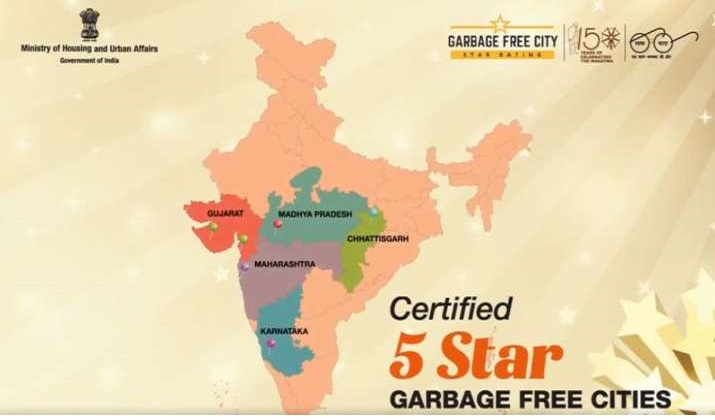
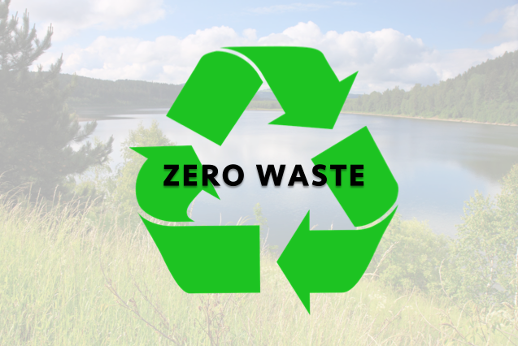
District Minister visits Zero Waste Management Project at Kumbarakoppal Karnataka
Plastic Waste Management Market 2021 affords an in-intensity look at historical facts approximately the Plastic Waste Management enterprise and the milestones it has passed. The Plastic Waste Management marketplace document incorporates an evaluation of the modern enterprise traits and advertising and marketing dynamics, with the assist of which the improvement of the Plastic Waste Management marketplace may be mapped.
The researchers used Porter’s Five Forces Analysis and SWOT Analysis to in brief provide an explanation for some key business parameters. The Plastic Waste Management marketplace document examines political changes, environmental standards, in addition to socio-monetary elements that may have an effect on the increase of the Plastic Waste Management Industries.
Our research study aims to provide its readers with an unbiased perspective on the Plastic Waste Management market, as well as a range of statistics that contain numerous opinions and recommendations from industry experts. In addition, you get a holistic overview of the Plastic Waste Management industry and its important segments, which have been separated according to product types, players, applications, and regions.
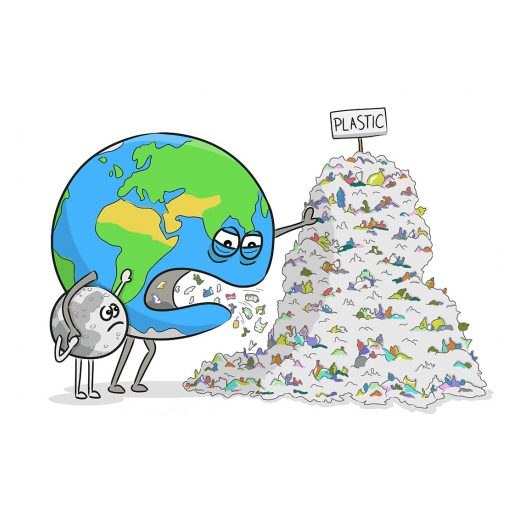
The New Plastic Waste Management Market Research is a prestigious in-intensity look that focuses totally on figuring out the economic possibilities of every enterprise. Similarly, it additionally offers deep know-how of competing approaches. This document analyses some
of the important thing players, their studies and improvement status, ability management
styles, growth strategies, and plenty more. The smart manner of explaining superior era and expenses is enhancing for the Plastic Waste Management enterprise players.
Key strategic developments in the Plastic Waste Management market:
This global study also includes the key strategic developments of the Plastic Waste Management market including the new product launchings, partnerships and collaboration among the key players functioning at the global level.
Extraordinary information on the Plastic Waste Management market:
- The evaluation affords an in-depth look at the Plastic Waste Management marketplace as nicely as modern enterprise traits and upcoming estimates for calculating upcoming funding strategies.
- The document additionally consists of an in-intensity look at the elements that decide and limit the increase of the Plastic Waste Management marketplace.
- Analysts have proposed a quantitative review of the Plastic Waste Management industry from 2021 to 2027 so that globalization actors can take advantage of the existing industrial opportunities.
- A brief assessment of the key segments of the Plastic Waste Management market will help understand the trends available in the Plastic Waste Management market environment.
- Demonstration of leading industry vendors and their lucrative strategies implemented to understand the competitive overview of the global Plastic Waste Management market.
Blog Source: https://starofmysore.com/district-minister-visits-zero-waste-management-unit-at-kumbarakoppal/
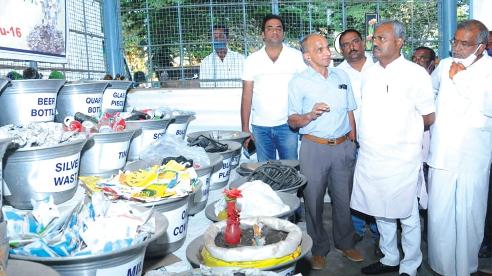
Plastic Waste Management
Plastic Waste Management Market 2021 affords an in-intensity look at historical facts approximately the Plastic Waste Management enterprise and the milestones it has passed. The Plastic Waste Management marketplace document incorporates an evaluation of the modern enterprise traits and advertising and marketing dynamics, with the assist of which the improvement of the Plastic Waste Management marketplace may be mapped.
The researchers used Porter’s Five Forces Analysis and SWOT Analysis to in brief provide an explanation for some key business parameters. The Plastic Waste Management marketplace document examines political changes, environmental standards, in addition to socio-monetary elements that may have an effect on the increase of the Plastic Waste Management Industries.
Our research study aims to provide its readers with an unbiased perspective on the Plastic Waste Management market, as well as a range of statistics that contain numerous opinions and recommendations from industry experts. In addition, you get a holistic overview of the Plastic Waste Management industry and its important segments, which have been separated according to product types, players, applications, and regions.
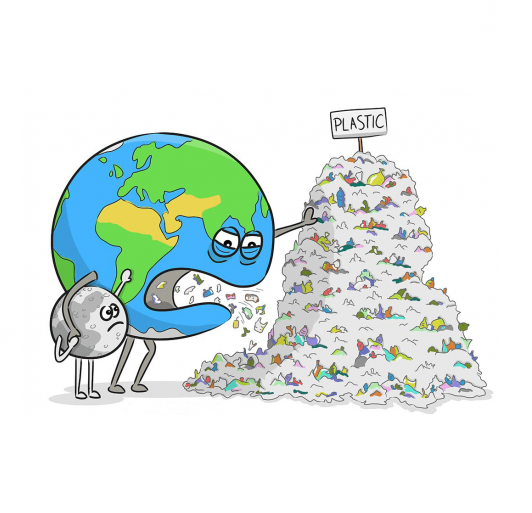
The New Plastic Waste Management Market Research is a prestigious in-intensity look that focuses totally on figuring out the economic possibilities of every enterprise. Similarly, it additionally offers deep know-how of competing approaches. This document analyses some of the important thing players, their studies and improvement status, ability management styles, growth strategies, and plenty more. The smart manner of explaining superior era and expenses is enhancing for the Plastic Waste Management enterprise players.
Key strategic developments in the Plastic Waste Management market:
This global study also includes the key strategic developments of the Plastic Waste Management market including the new product launchings, partnerships and collaboration among the key players functioning at the global level.
Extraordinary information on the Plastic Waste Management market:
- The evaluation affords an in-depth look at the Plastic Waste Management marketplace as nicely as modern enterprise traits and upcoming estimates for calculating upcoming funding strategies.
- The document additionally consists of an in-intensity look at the elements that decide and limit the increase of the Plastic Waste Management marketplace.
- Analysts have proposed a quantitative review of the Plastic Waste Management industry from 2021 to 2027 so that globalization actors can take advantage of the existing industrial opportunities.
- A brief assessment of the key segments of the Plastic Waste Management market will help understand the trends available in the Plastic Waste Management market environment.
- Demonstration of leading industry vendors and their lucrative strategies implemented to understand the competitive overview of the global Plastic Waste Management market
Blog Source: https://zerosolidwaste.medium.com/plastic-waste-management-market-size-2021-e064c03f0f0f
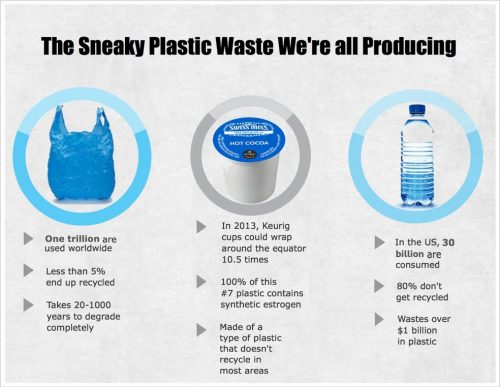
Digital tracking in plastic waste management
India generates 15 million tonnes of plastic waste each year however only one-fourth of that is recycled because of the dearth of a functioning solid waste management system. All-State governments have come ahead with modern efforts and multiple farsighted companies have also moved plastic waste management direction.
The Union Environment Ministry introduced the draft Plastic Waste Management (Amendment) Rules 2021 in March. The Ministry has proposed a blanket ban on diverse classes of single-use plastic items, amongst different changes.
Several kingdom governments have already begun to deal with plastic clutter and are properly in advance of the curve. The district manager of the Tamil Nadu kingdom authorities has long gone that more mile in the direction of attaining a plastic-unfastened surrounding by banning using single-use plastic (SUP). Self-assist groups (SHGs), non-governmental corporations (NGOs), and network corporations have stepped in to unfold the phrase on plastic waste control and the 3Rs Rule: to lessen, reuse and recycle plastic. Palm leaves, aloe Vera, banana fiber, terracotta, and cotton fabric are getting used as options for plastic.
The various audio system has shared their reviews thru the CII webinar ‘EPR fulfillment – Sharing Experiences of Stakeholders and Way Forward’. “We are constructing on current structures to lessen the effect of plastic waste on the surroundings in India. This is taking place thru a partnership with Hindustan Coca-Cola Beverages Private Limited, Hindustan Unilever Limited, HDFC Bank & Coca Cola India Foundation,” stated Prabhjot Sodhi, head (Circular Economy) Plastic Waste Management Project, United Nations Development Program (UNDP).
Municipal Corporations have been introduced into the traceability fold. Here the point of interest is on Safari Sathis or waste pickers who select out the waste. Their responsibility takes place thru scalable digitized strategies used for maintenance-dispatch-elevating invoices. The software, which is operational in numerous cities, has helped institutionalize waste pickers, who now have financial institution debts and take benefit of scientific check-ups. The plastic waste this is gathered and segregated is recycled. The endeavor is a flow in the direction of around economy.
Also in affiliation with NEPRA, a plastic waste-management program has been released in colleges in Varanasi in which college students have donated dry plastic waste. These are used to make chairs and tables which can be donated to NGOs. “As a part of our EPR policy, our organization has labored with waste-control companies to sensitize college students and the general public at large,” brought Gupta. A beach-cleansing initiative in Mumbai is likewise a part of the agenda. Not-for-income Company Project Mumbai joined fingers with PepsiCo India to ease the seashores in an attempt that has been christened as Jallosh – Clean Coasts.
All those coordinated efforts are sponsored via way of means of the era. “Segregation and era move hand in hand in relation to plastic waste.

As a part of the strategy, it becomes determined that a part of the cash earned through the manufacturers must-visit rag pickers. “Our platform has 14,000 rag pickers from 3 states. They hook up with us via the cell phone and What Sapp messages,” introduced Deshpande. It is a recognized reality that a business fee wishes to be a.
Solid Waste Management:
The solid waste management sector works as a strategically connected ‘process chain’, where management starts even before waste generation where you aim for reducing waste generation levels, such as by enforcing or encouraging reduced packaging.
The household then acts as a critical post where reuse, recycling, and segregation can happen, significantly reducing the waste load needing collection and transportation. At various stages during this cycle, elements of reuse, recycling, up cycling, and energy generation can be embedded.
Blog Source: https://zerowasterecycler.wordpress.com/2021/05/17/digital-tracking-in-plastic-waste-management/
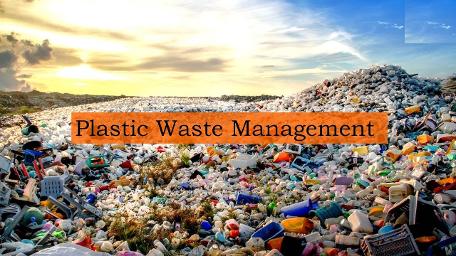
Legacy Waste Management in India
More than 3,000 garbage dumps in India want to be restored or completely closed. Scientifically unsustainable waste disposal reasons irreversible harm to the environment: It produces leachates, emits greenhouse gases, and contaminates groundwater, and so on.
Leachate is any liquid that, while passing via waste, releases soluble or suspended contaminants. It is risky in nature. The environmental, environmental, and monetary influences regularly make landfills a risk to be controlled. There is a pressing want, therefore, to reclaim present landfills to make certain the supply of landfills and to recycle the disused sources included into old landfills.
Significantly, there are two possible ways to manage asset waste.
- Scientific writing, widely used in scientifically constructed landfills
- A landfill / bio mining mine, which is a technology-enabled and economically managed resource for recycling and other components that generate revenue from waste disposal by landfill.
Therefore, the first step in restoring a landfill is to analyses the technical limitations such as the characteristics and structure of the waste heritage to assess the feasibility of rehabilitating landfill sites.
The composition of the heritage waste from the four garbage dumps in India indicates that there are four key components of fine waste: fine soil/materials such as sand, polymeric waste and flammable materials, stones (over 20 Milli meters in size) and mixed materials. It is important to understand that the formation of older waste or heritage waste is not the same as new municipal waste.
Heritage waste management ought to be integrated with an incorporated waste control facility with enough ability to collect, do away with and do away with stable municipal waste generated on a day-by-day foundation in addition to historical past waste trapped in landfills. The cash-producing devices can assist produce a roundabout economy in India’s sustainable business version for years to come.
However, it can be a challenge for all stakeholders to embrace these strategies in real-life situations due to a number of economic and legal conditions. There is a lot of uncertainty and unexpected situations that can arise and affect so-called ‘green businesses’. There is a clear and urgent need for collaboration between the academia, industries, and policymakers in order to develop a sustainable business model for legacy waste management based on the principles of the circular economy.
Originally Content Source: https://zerowasterecycler.wordpress.com/2021/09/06/legacy-waste-management-in-india/
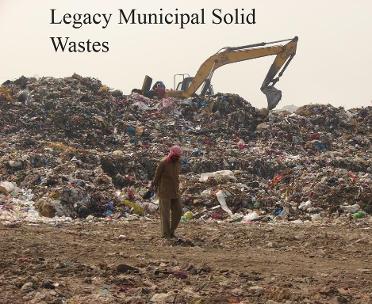
Anti-smog gun Installed to fight pollution in Delhi
An anti-smog gun is used to spray water after connecting it with a water tank mounted on a four-wheel. It converts the water into a fine spray with droplets size of 20-10 microns bypassing it at high pressure through propellers. The idea behind this invention is to reduce air pollution by binding dust and other particulate matter and carrying them down to the ground level along with water.
It basically works as rain to bring down the suspended particles present in the air. This device could be mounted anywhere and spray mist to settle all suspended particles. Anti-smog gun for small regions can spray mist in 1200 square location with the potential of 30 liters in line with hr to convey down the polluted debris from the atmosphere. According to the statement, the anti-smog gun has a ‘throw distance’ of one hundred meters with the dimensions of water droplets ranging among 30 microns and 50 microns that might cowl a place among 27,000 rectangular meters and 37,000 rectangular meters.
To combat air pollution, New Delhi Municipal Council inaugurated an anti-smog gun in Delhi. An official said, ‘It will reduce air pollution by spraying atomized water into the atmosphere so that dust and pollution particles are removed from the environment, and PM 10 and PM 2.5 levels are reduced by 60-70%.
The major 13 places, declared as pollution hotspots by the Delhi government, are Jahangirpuri, Narela, Ashok Vihar, Vivek Vihar, Dwarka, Mundka, Rohini, Wazirpur, Okhla, Bawana, Anand Vihar, Punjabi Bagh and R.K. Puram.
DCC Infra Private Limited we are one of the pioneers of making heavy Air Misting machines and equipment. We have come up with a solution to overcome this problem of air pollution. Anti smog Gun is a tool designed to lessen air pollutants via way of means of spraying atomized water into the ecosystem so that each one the dirt and polluted debris get clean from the environment. Air Misting Machine, Fogger Machine, Air Mist Blower, Dust Suppression Machine, Air Misting Machine, Anti-Smog machine, Anti smog gun manufacturers, Dust Suppression Equipment, Fogger Equipment manufacturers in India.
Content Source Link: https://zerowasterecycler.wordpress.com/2021/10/11/anti-smog-gun-in-delhi/

3 Indian cities have managed to solve the problem of landfills
Three Indian cities, each located in a different state, have set a major benchmark for the rest of the country when it comes to ideal waste management practices, according to a new NITI Aayog report.
At a time while rubbish disposal sites have grown to be a big hassle for maximum city centers, Chhattisgarh’s Ambikapur, Maharashtra’s Chandrapur and Kerala’s Taliparamba have followed a “zero-landfill model” of development, which seeks to segment out dependency on new landfills. This fulfillment has landed the 3 towns in a listing of 28 with great waste control practices, cited withinside the record launched with the aid of using NITI Aayog.
“With fast populace increase in city areas, capacities of nearby government regularly fall quick of attaining the set dreams of city provider delivery. Therefore, zone stakeholders should be ready with good enough expertise sources to plot green waste control systems,” stated Kant on the launch.
According to the record, a zero waste landfill is primarily based totally on aid healing and concepts of round economy” which might be socially, environmentally, and economically sound. It identifies a “zero-landfill city” as one which guarantees most portions of waste are subject to medical remedy and recycling, therefore decreasing the quantity of residual stable waste and minimizing the want to assemble new landfills.
Garbage disposal sites have become a massive problem for most urban centers, but Ambikapur, Chandrapur and Taliparamba have adopted ‘zero-landfill model.
DCC, initiative waste Recycle is the largest waste management solution in India. We strategize to bring in environmental solutions that can help the communities and organizations to become sustainable. Waste Management is been specially categorized for communities where both dry and wet waste is been found.
Content Source: https://zerowasterecycler.wordpress.com/2022/03/05/3-indian-cities-have-managed-to-solve-the-problem-of-landfills/
